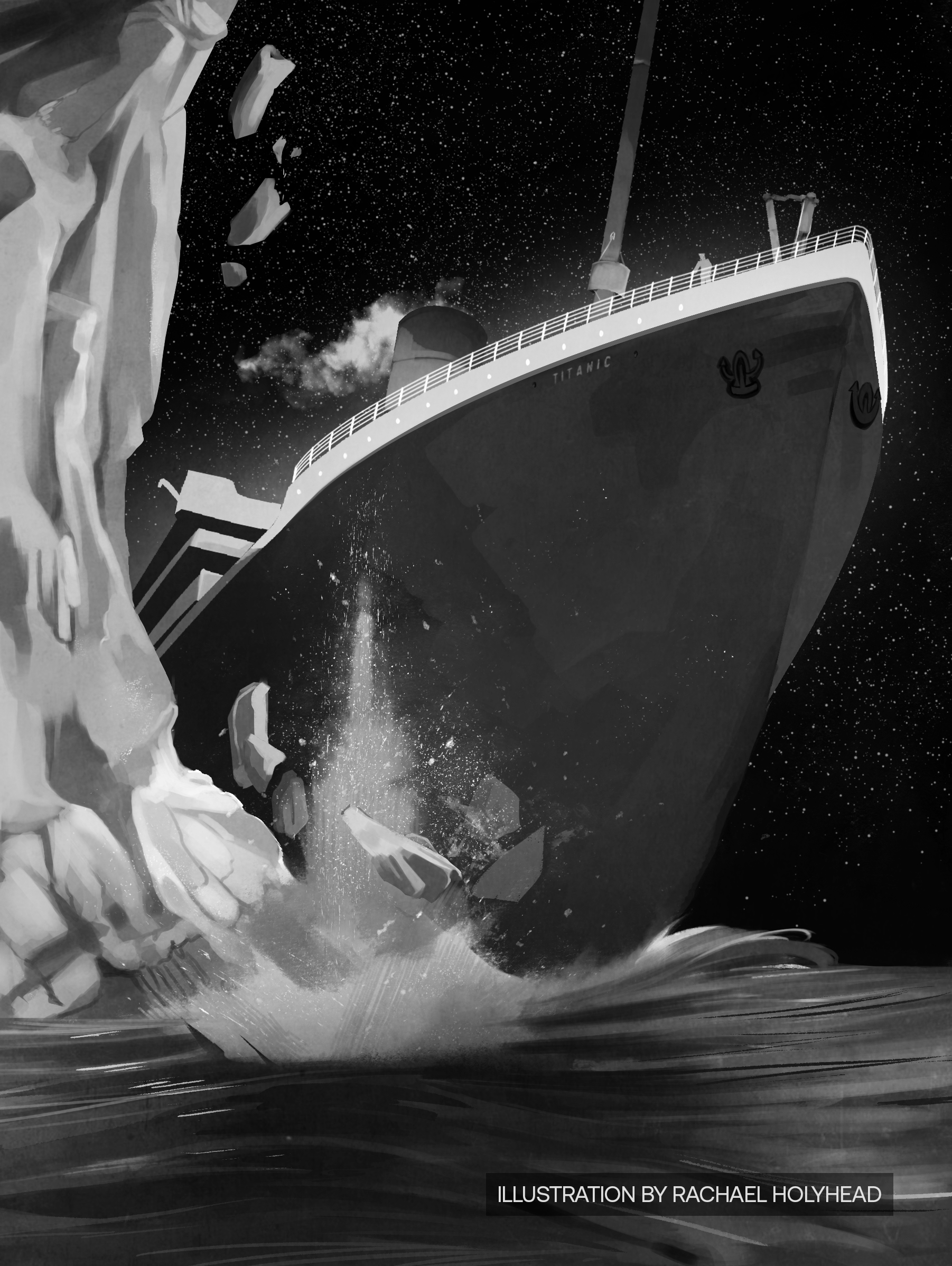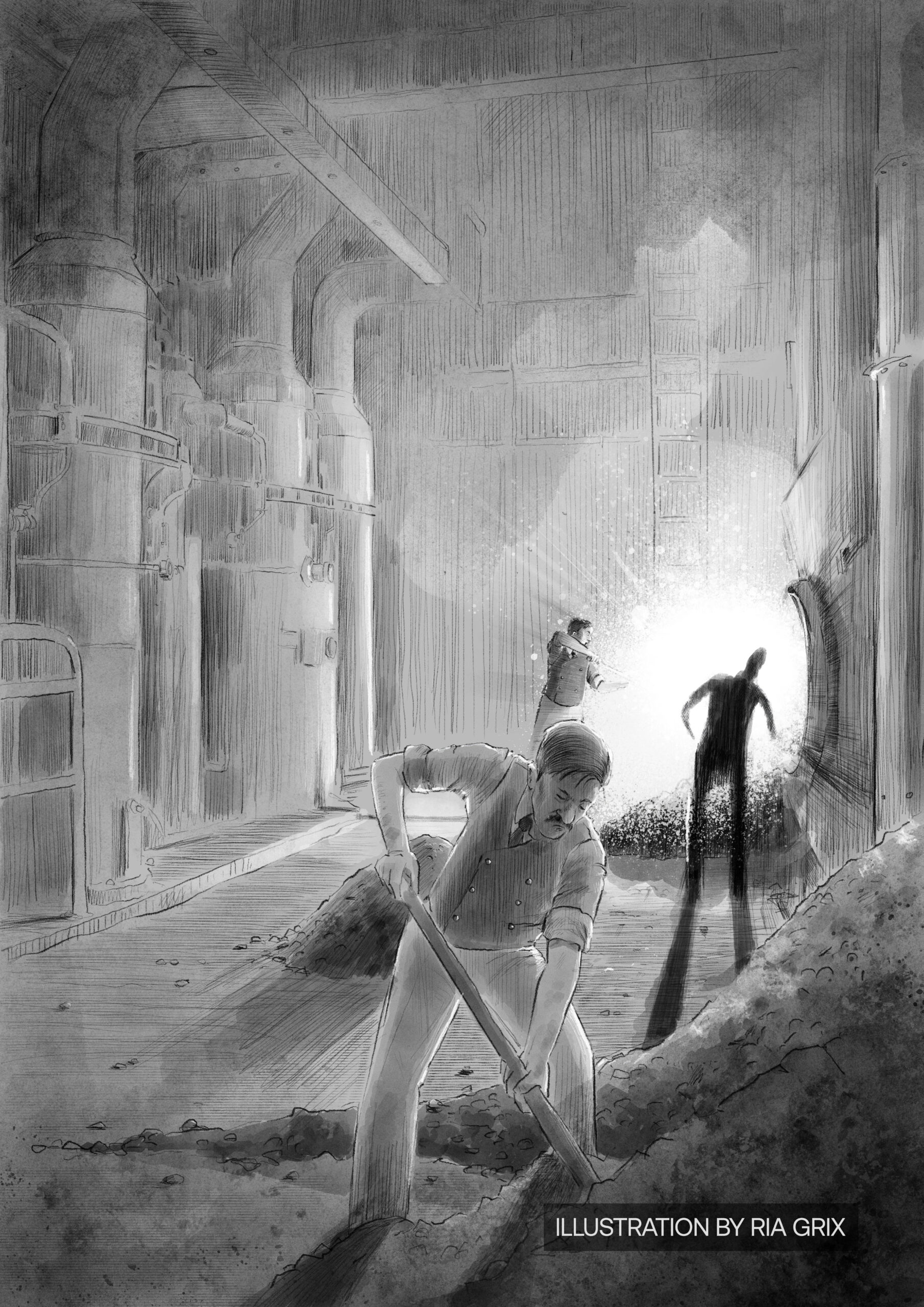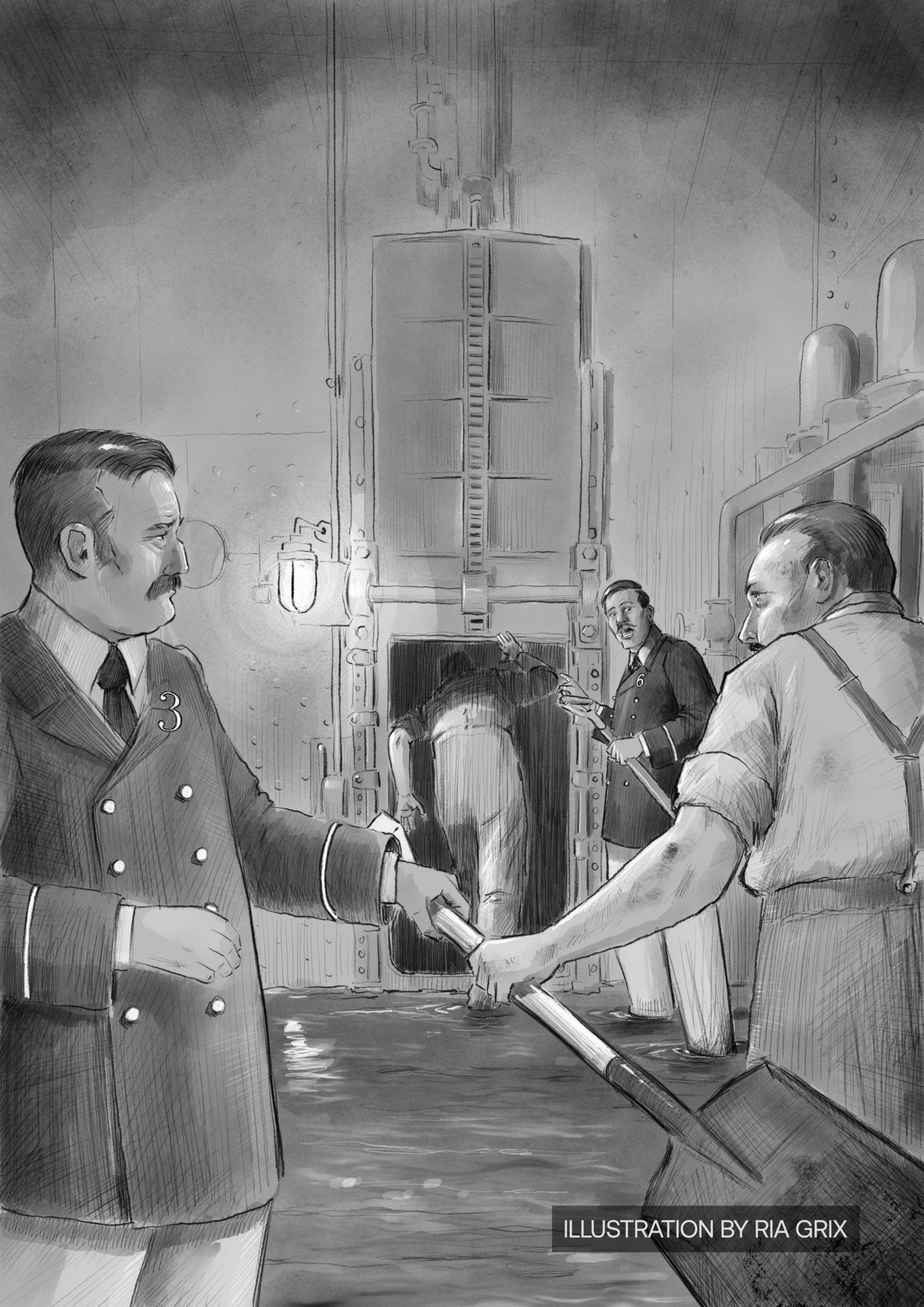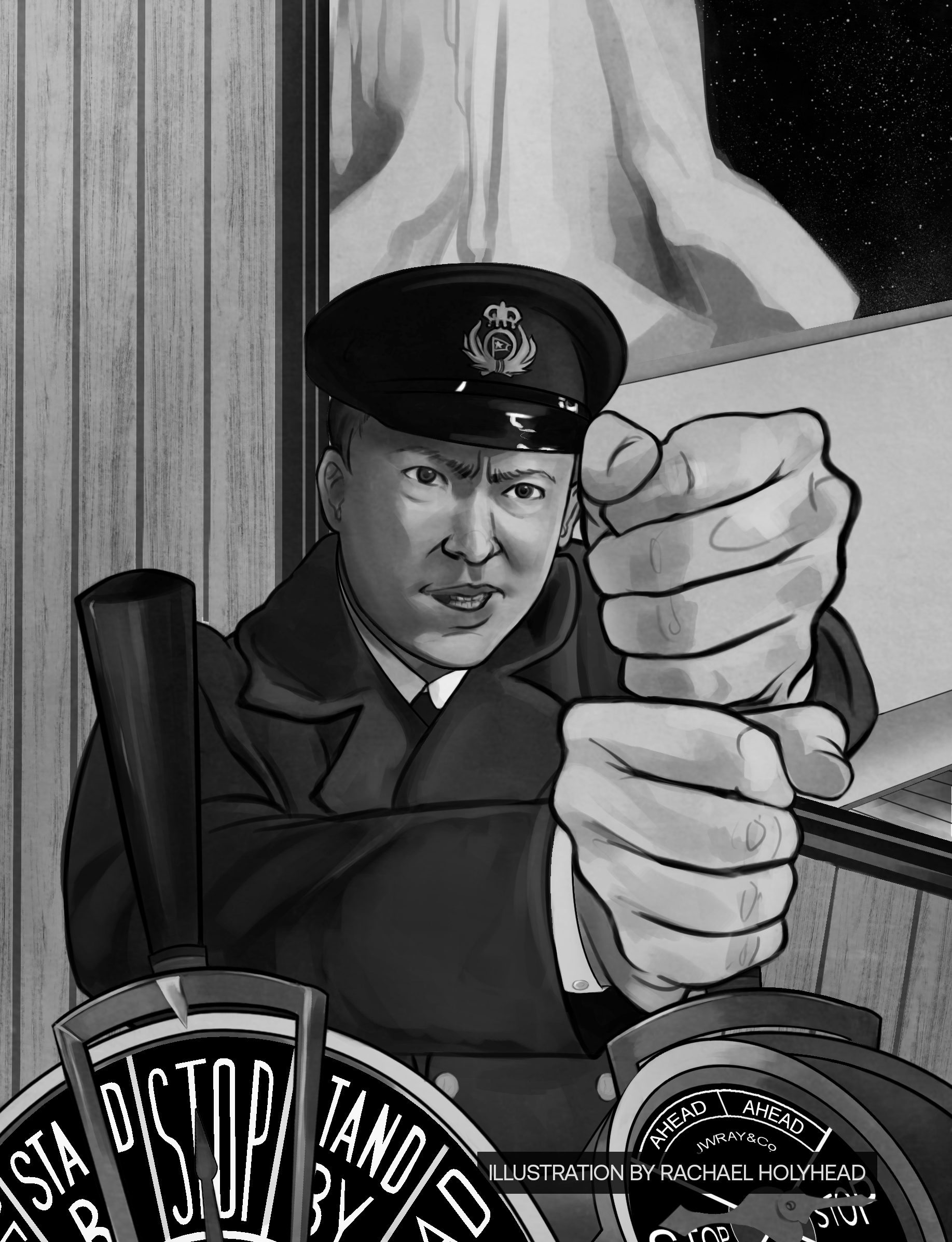Titanic, The Digital Resurrection
Behind the Virtual Production
The Process Of Titanic’s Most Advanced Visual Reconstruction
Revealing The Titanic As It Has Never Been Seen Before
For over a century, the Titanic has stood as a symbol of ambition, tragedy and enduring mystery. Now, through groundbreaking deep-sea exploration and innovative technology, this project presents a detailed, in-depth and immersive look at the Titanic.
Rather than simply documenting the wreck, the goal was to transform raw scan data into a visually compelling and scientifically accurate digital twin, one that could be explored through cinematic storytelling and interactive environments.
Through a combination of advanced visual effects, virtual production and meticulous design, Atlantic Studios offers a deeper understanding of the ship’s story and reveals new perspectives on one of history’s most infamous maritime disasters.
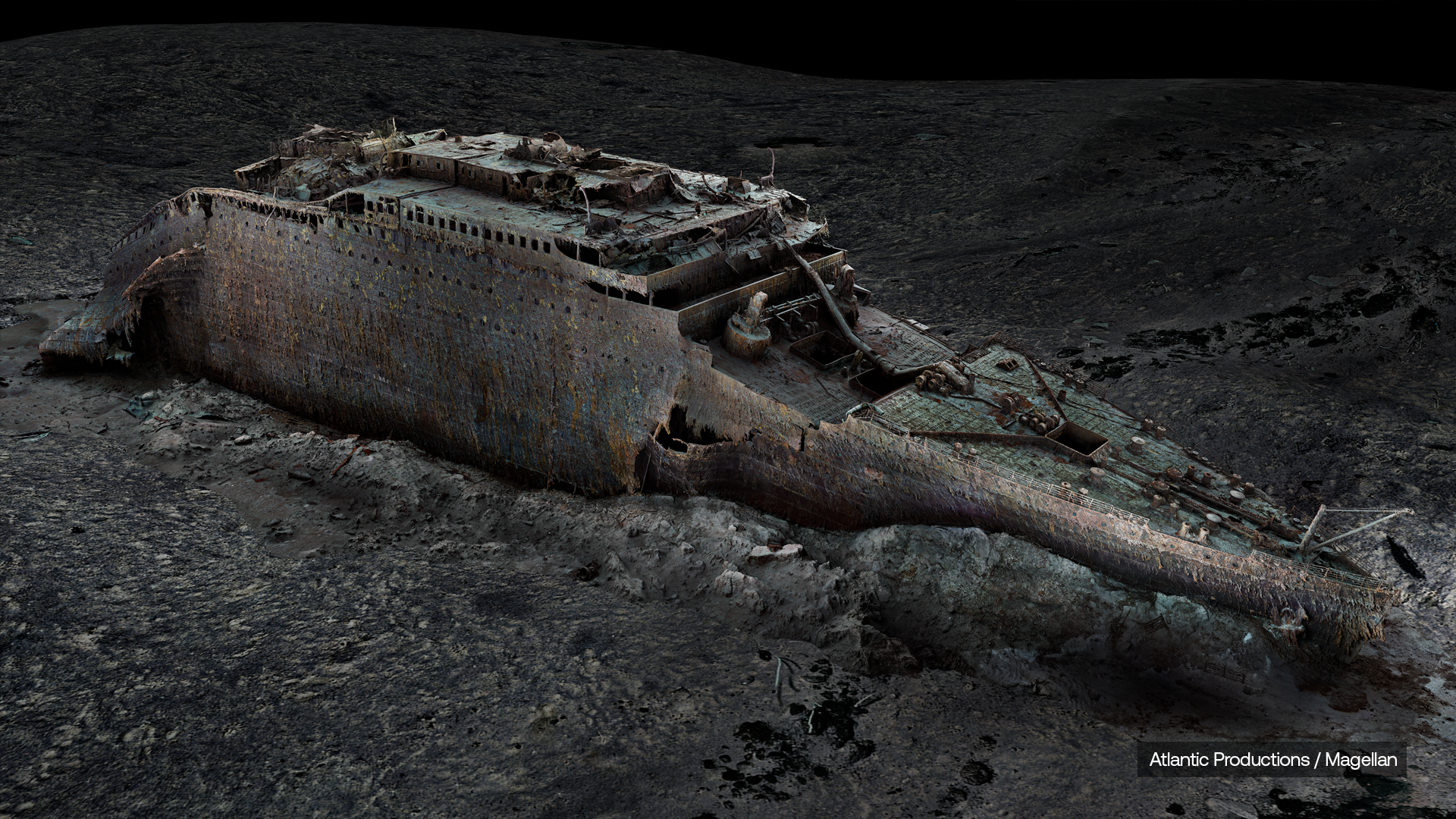

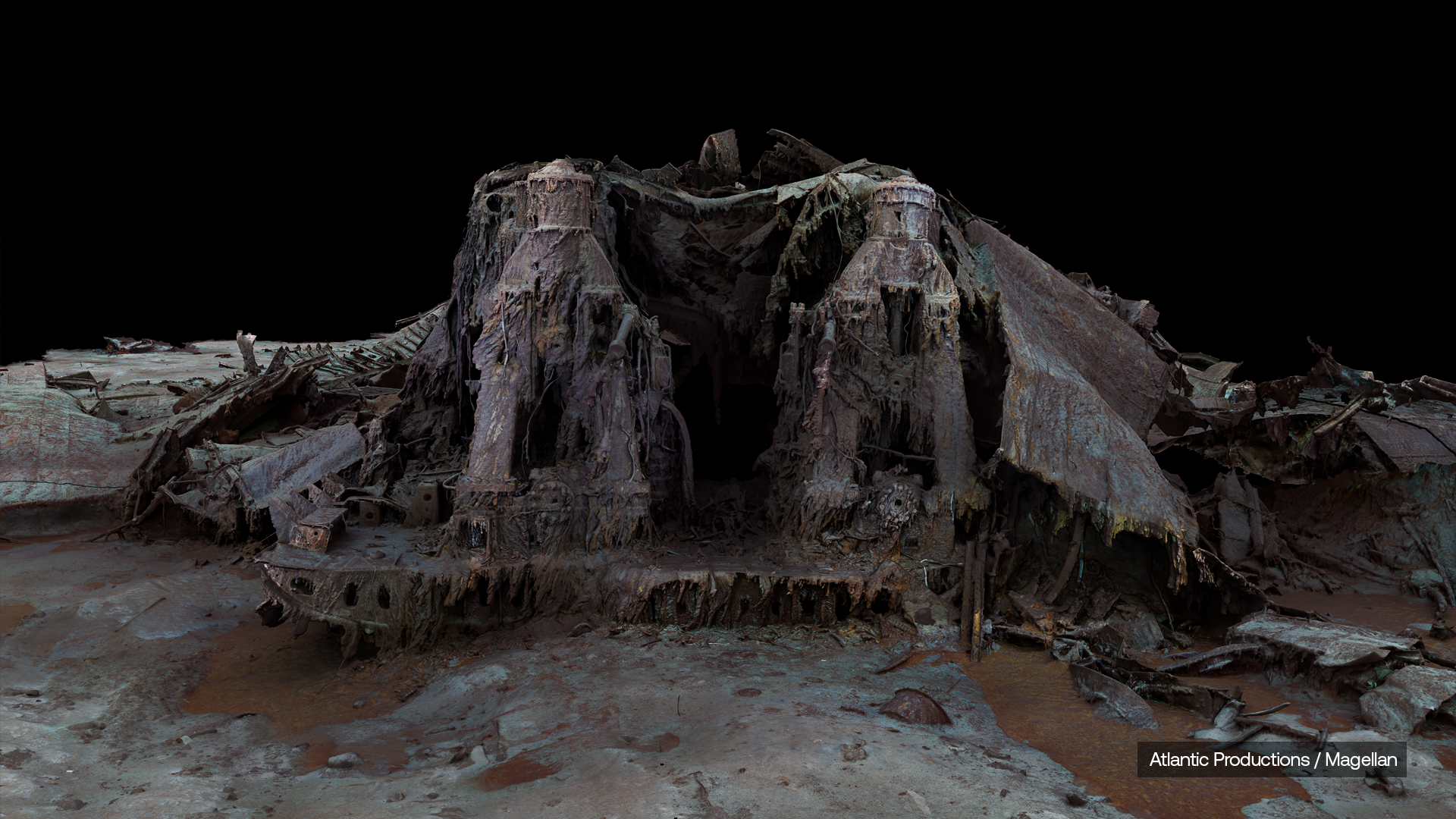
Titanic, From Vision to Tragedy
The Titanic was conceived as the largest and most luxurious ocean liner of its time, a marvel of early 20th-century engineering. Designed by Harland and Wolff in Belfast, its construction began in 1909 and took over two years to complete. At 882 feet long and 175 feet tall, the ship embodied grandeur, featuring opulent interiors, first-class amenities and cutting-edge safety features, including a double bottom hull and watertight compartments.
However, Titanic’s maiden voyage in April 1912 ended in tragedy. The ship struck an iceberg in the North Atlantic and sank within hours, claiming over 1,500 lives. This ill-fated journey has since become a symbol of human ambition, as well as a stark reminder of nature’s unforgiving power.
This investigation underscores the stark contrast between its promise and its fate, offering a cinematic and technical understanding of the ship’s story.
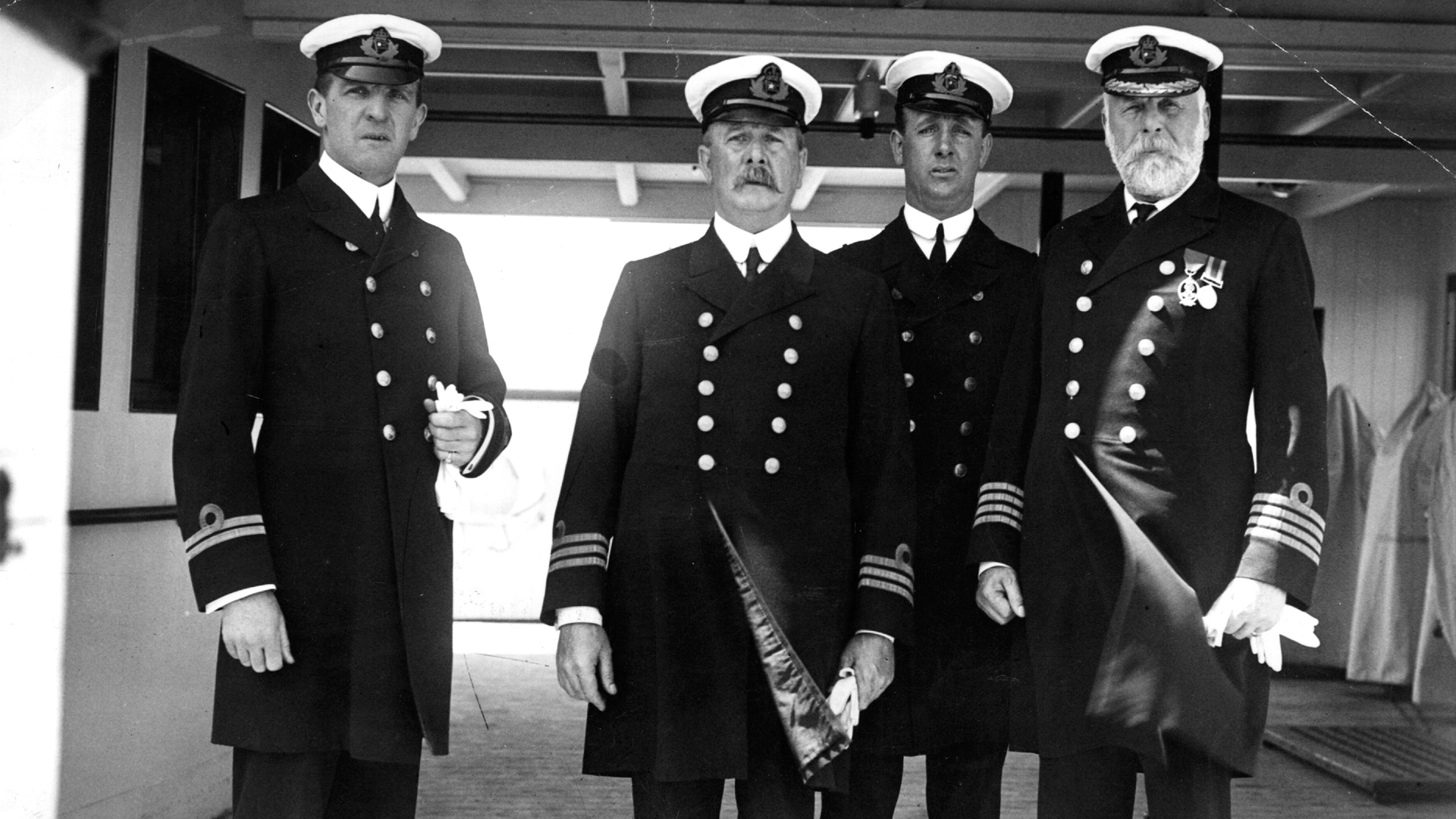

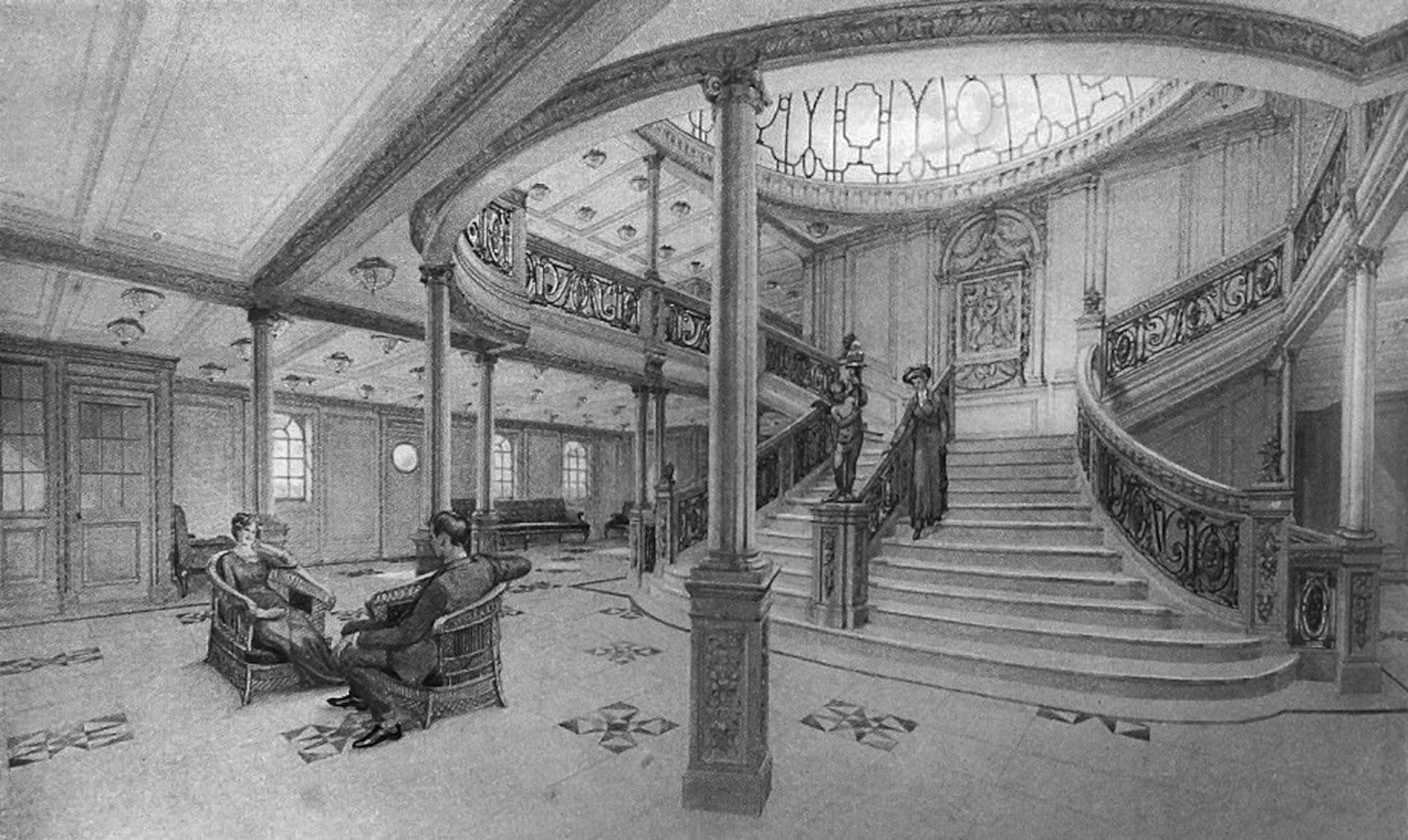
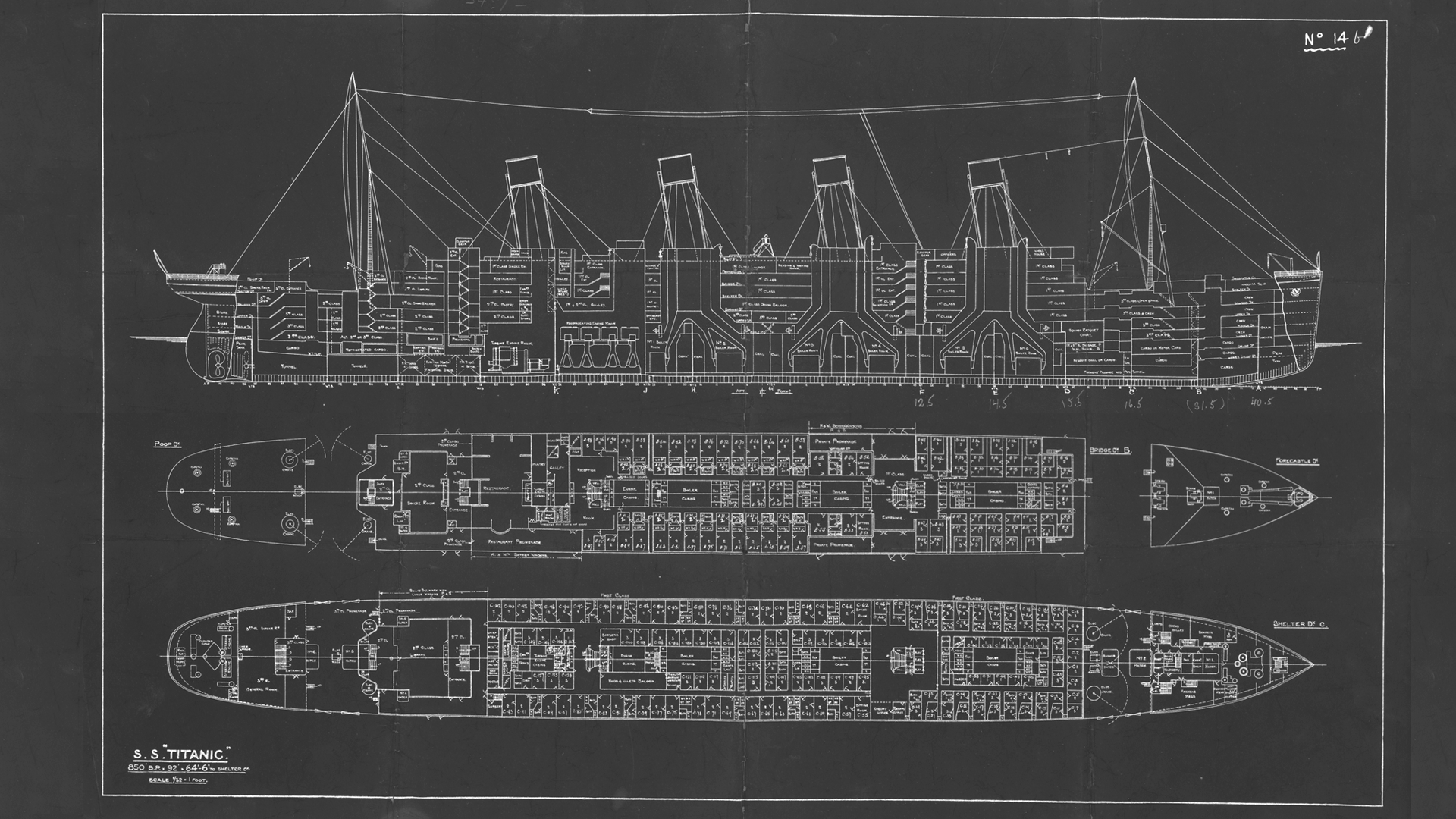
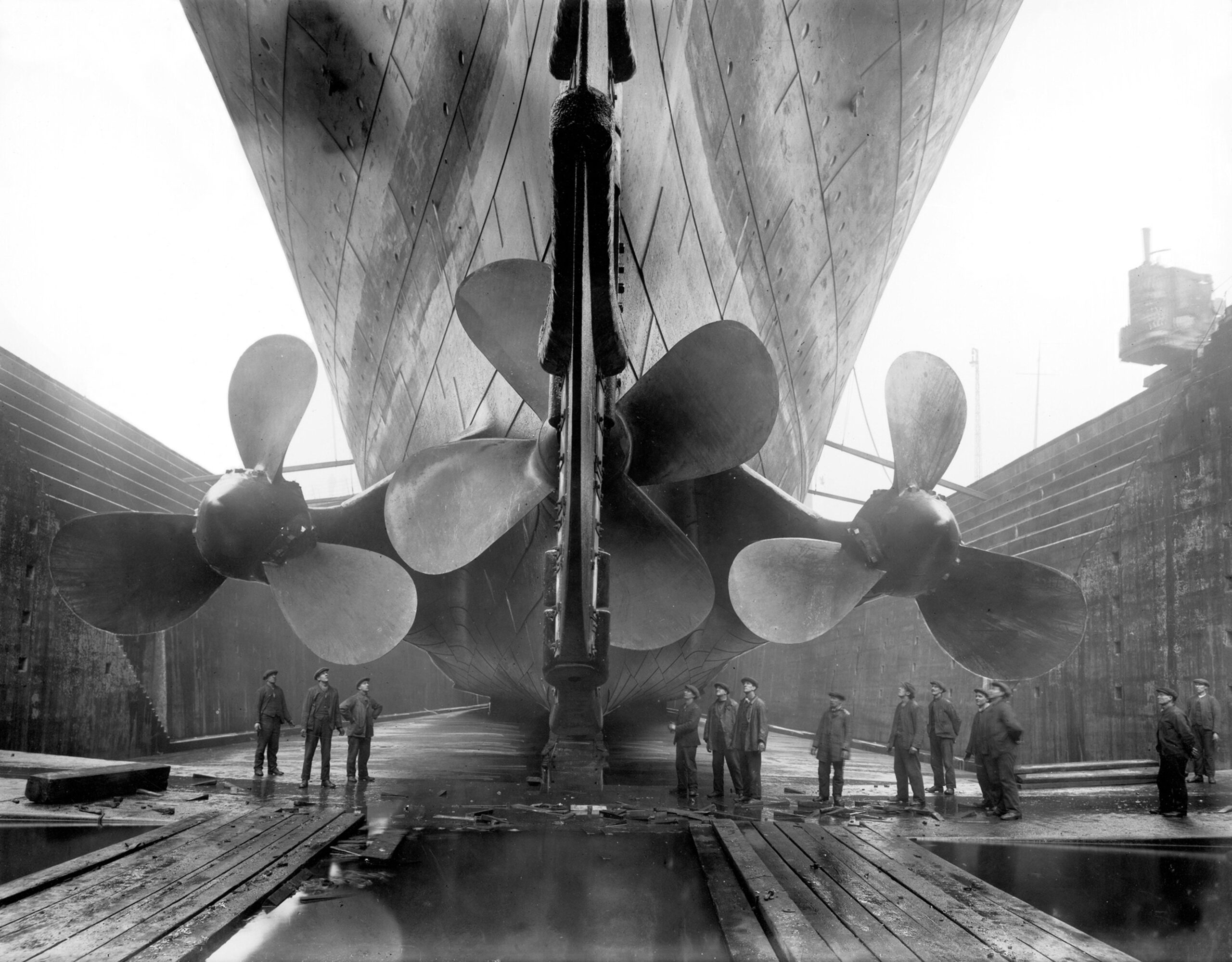
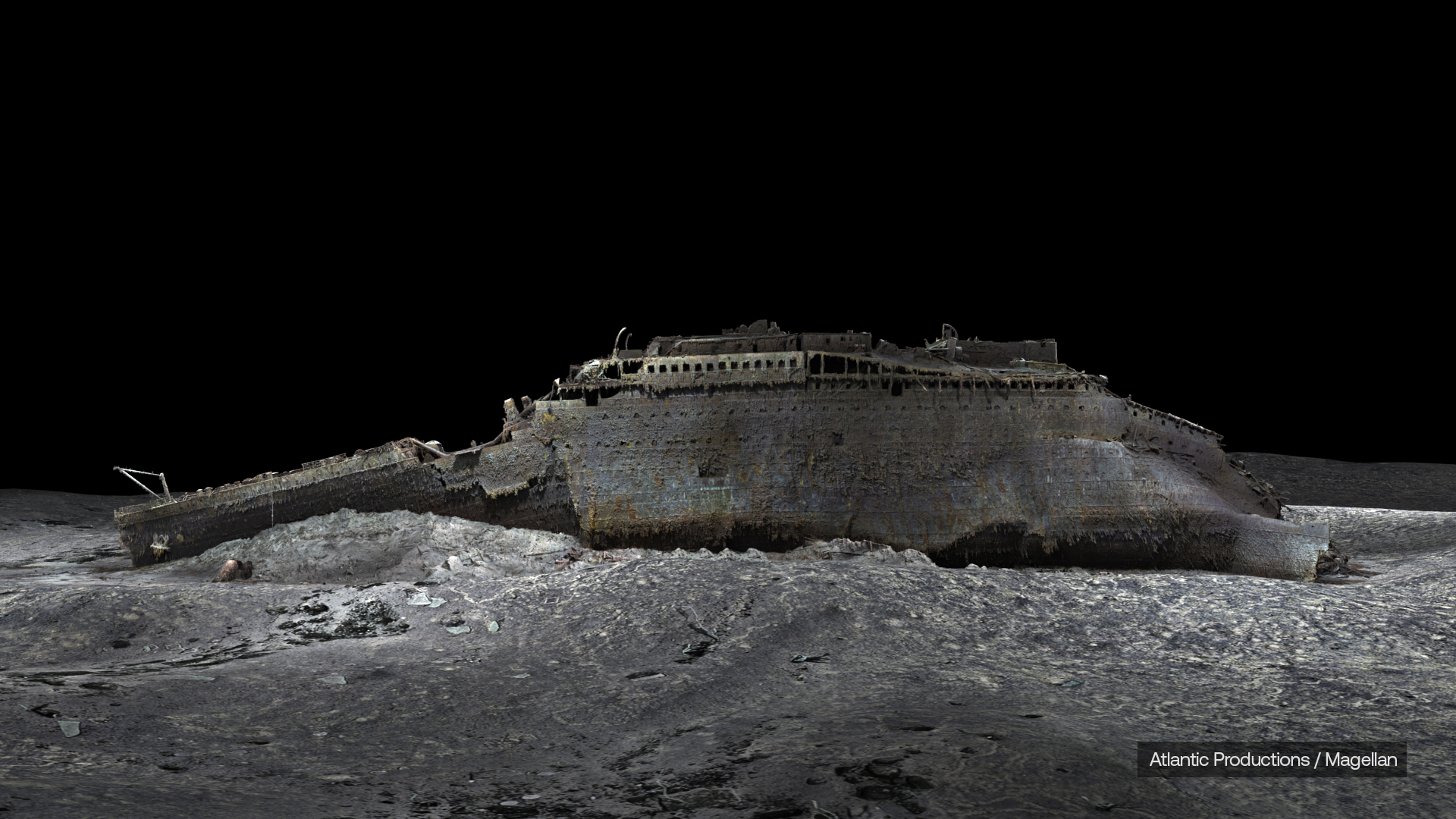
A New Chapter In Deep Sea Exploration
In 2022, award-winning CEO Anthony Geffen and the Atlantic Studios team partnered with Magellan as they undertook the largest deep-sea scanning project of its kind, mapping the Titanic wreck, 12,500 feet below the North Atlantic. Over three weeks, working around the clock, they gathered 16 terabytes of data, capturing 715,000 still images and 4K video footage. This allowed for the creation of a full-scale, 1:1 digital twin, accurate down to the smallest detail.
Unlike previous Titanic explorations, which relied on limited footage and partial reconstructions, this project offers a complete and comprehensive view of the wreck. Every rivet, every collapsed deck and every remaining artefact is now mapped with scientific precision, providing an invaluable historical record of the ship before time and before the ocean reclaims it completely.
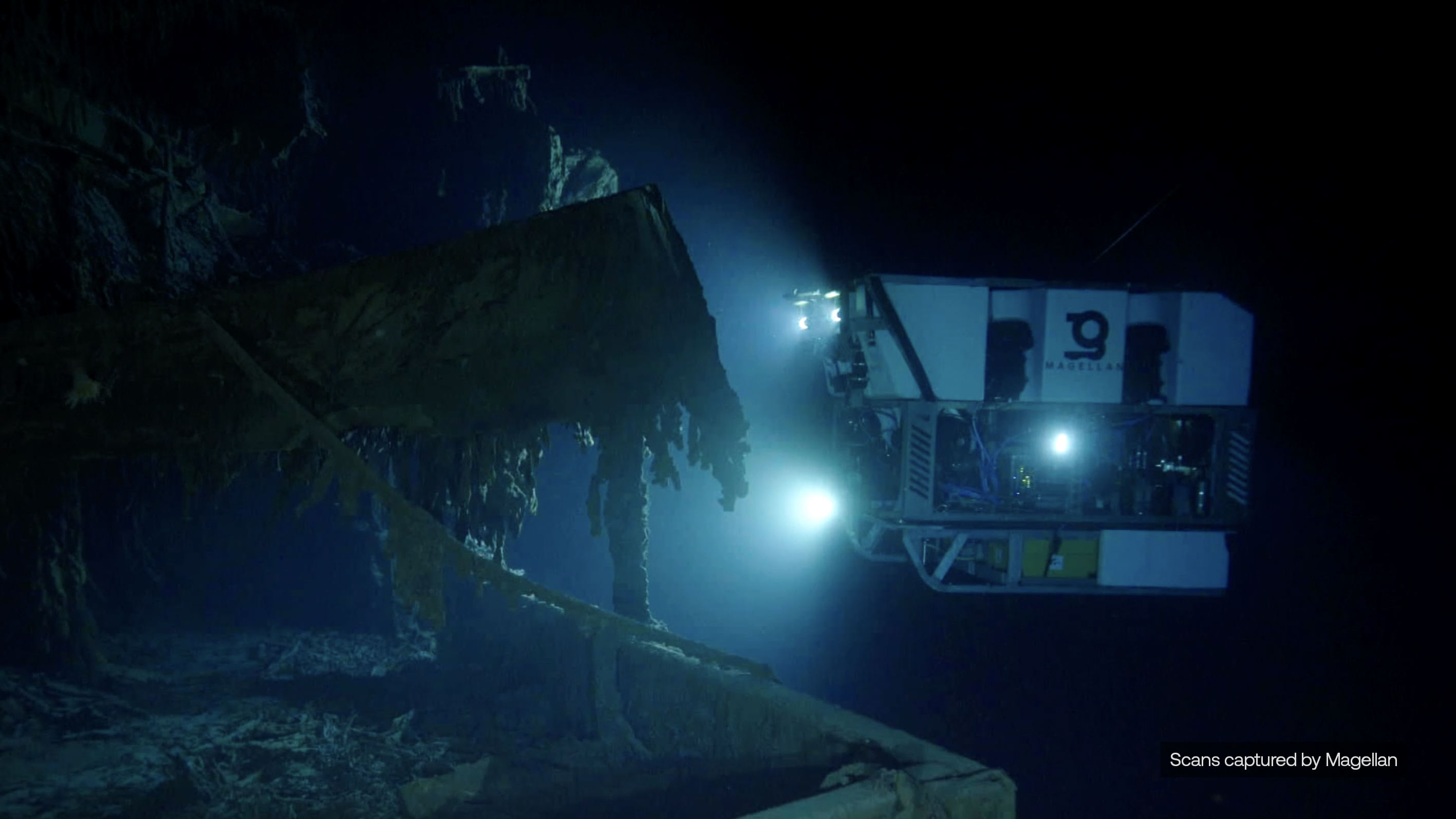
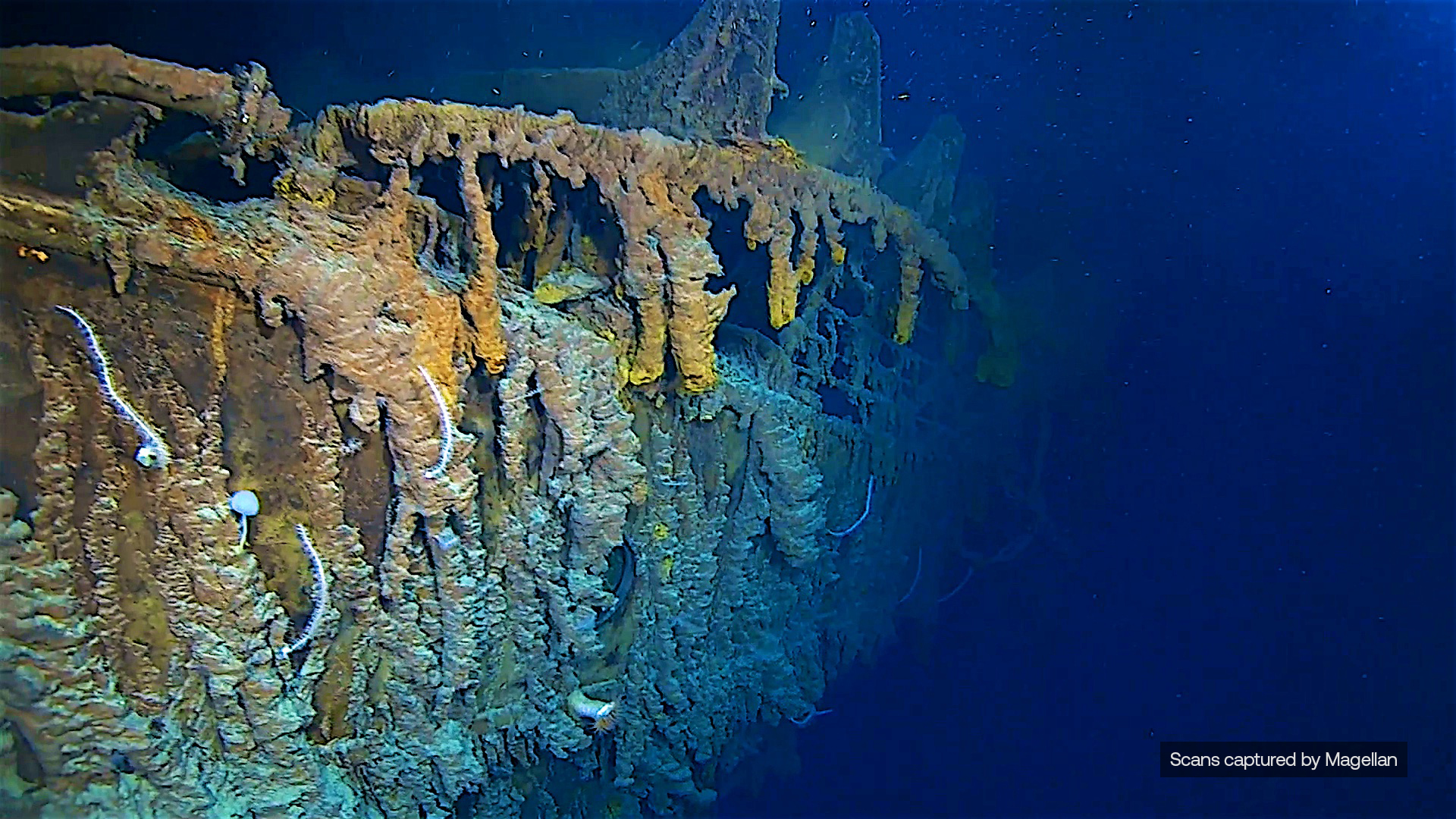
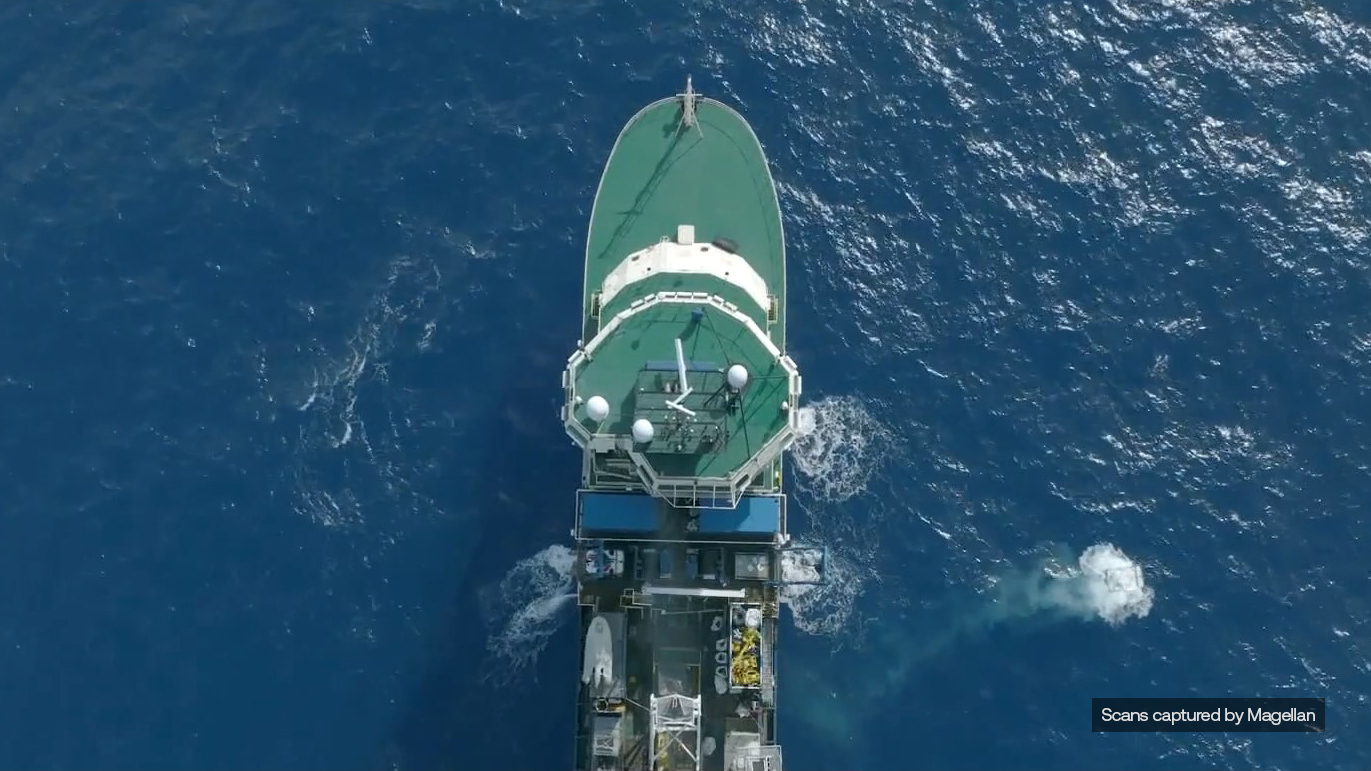
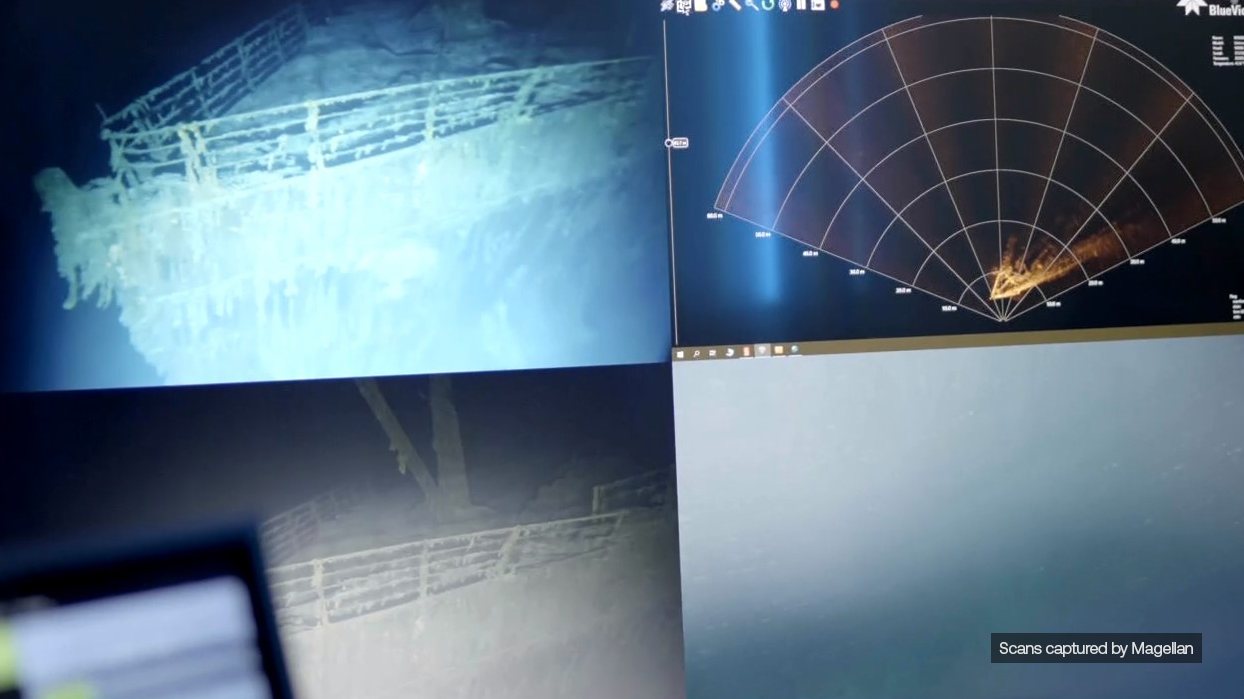
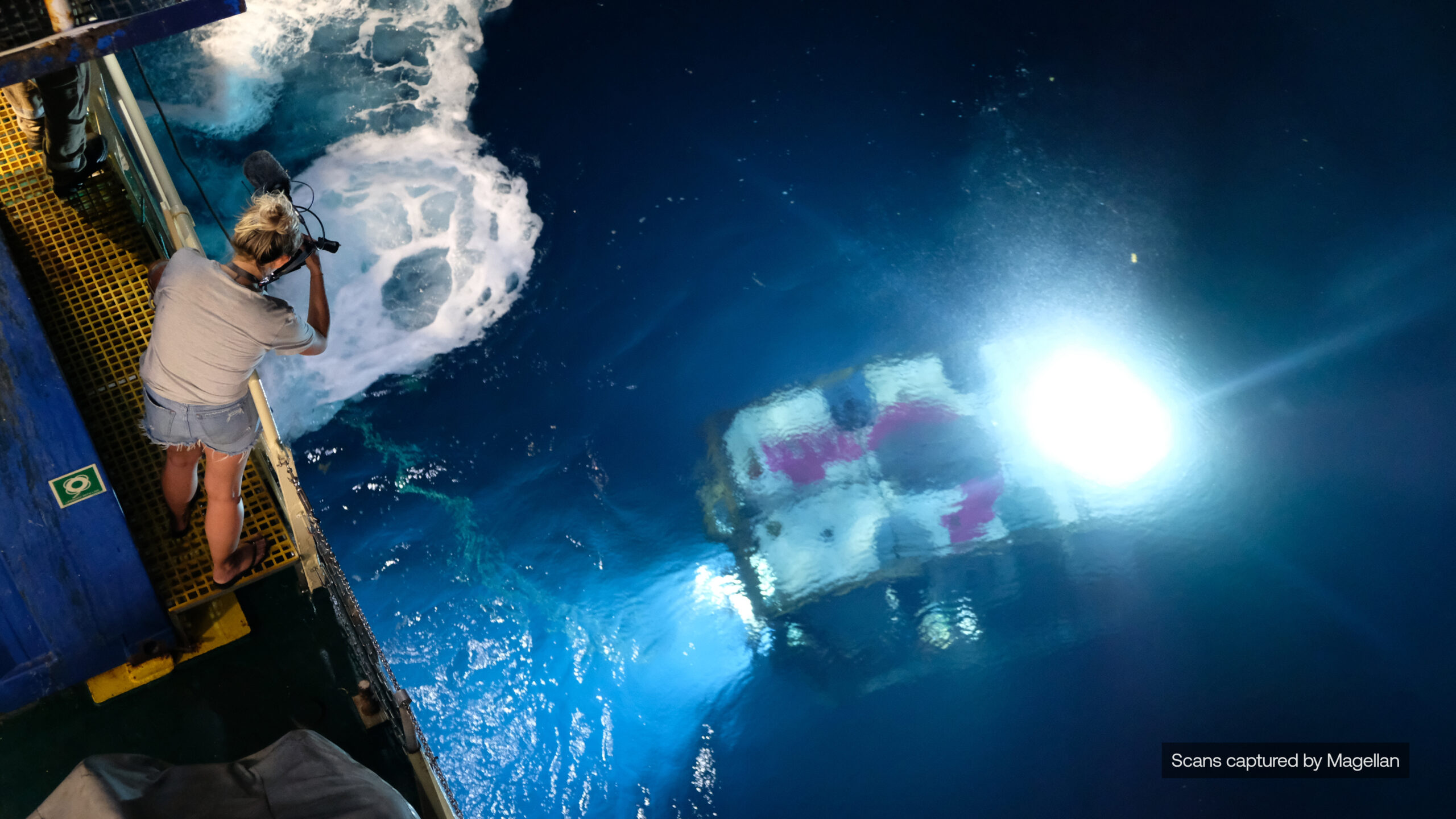
Research and Production
Bringing the Titanic’s story to life required an in-depth research process, combining historical analysis, expert consultation, and innovative technology to ensure accuracy at every stage. The project team meticulously examined deep-sea footage captured by the submarine, scanning the wreck and debris field for objects that could reveal new details about the ship’s passengers, crew and final hours.
Experts such as Parks Stephenson, a leading Titanic analyst, and Ken Marshall, a renowned Titanic visual historian, played a crucial role in interpreting these findings, using their knowledge of the ship’s design and historical context to validate discoveries.
To establish a strong foundation for the narrative, the team delved into decades of Titanic literature, research papers, and historical theories. The research expanded through direct collaboration with experts across multiple disciplines, including marine forensic specialists, naval architects, metallurgists, historical archivists, engineers and historians specialising in fashion, naval operations and maritime law. Finding the right experts for the most specific areas of study often took weeks or months, but these conversations played a crucial role in shaping the project’s findings.
The expertise of Bill Sauder, a leading Titanic historian known for his meticulous work in identifying artefacts and ship components, added another layer of depth to the investigative process, helping to decode the significance of objects recovered from the site.
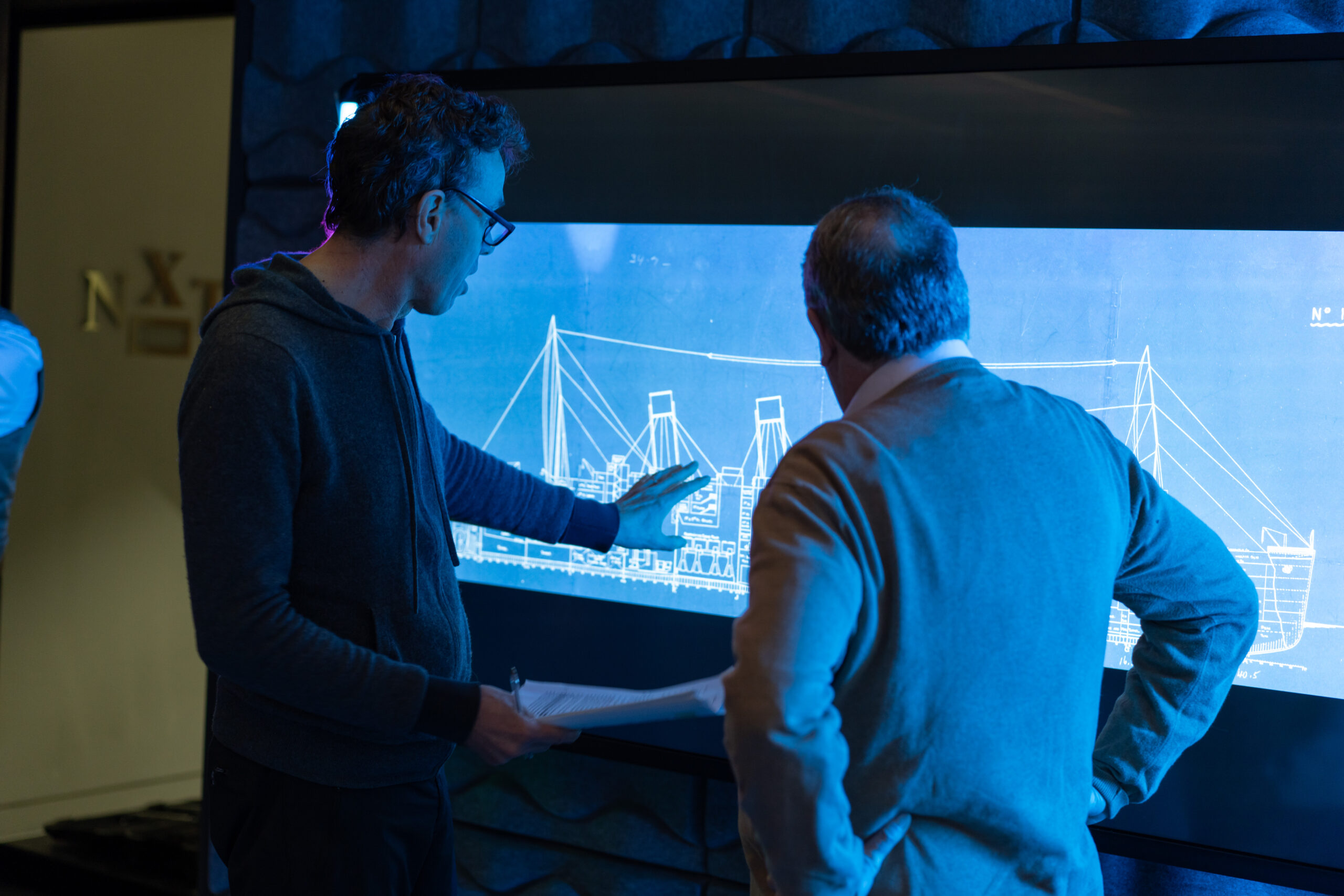
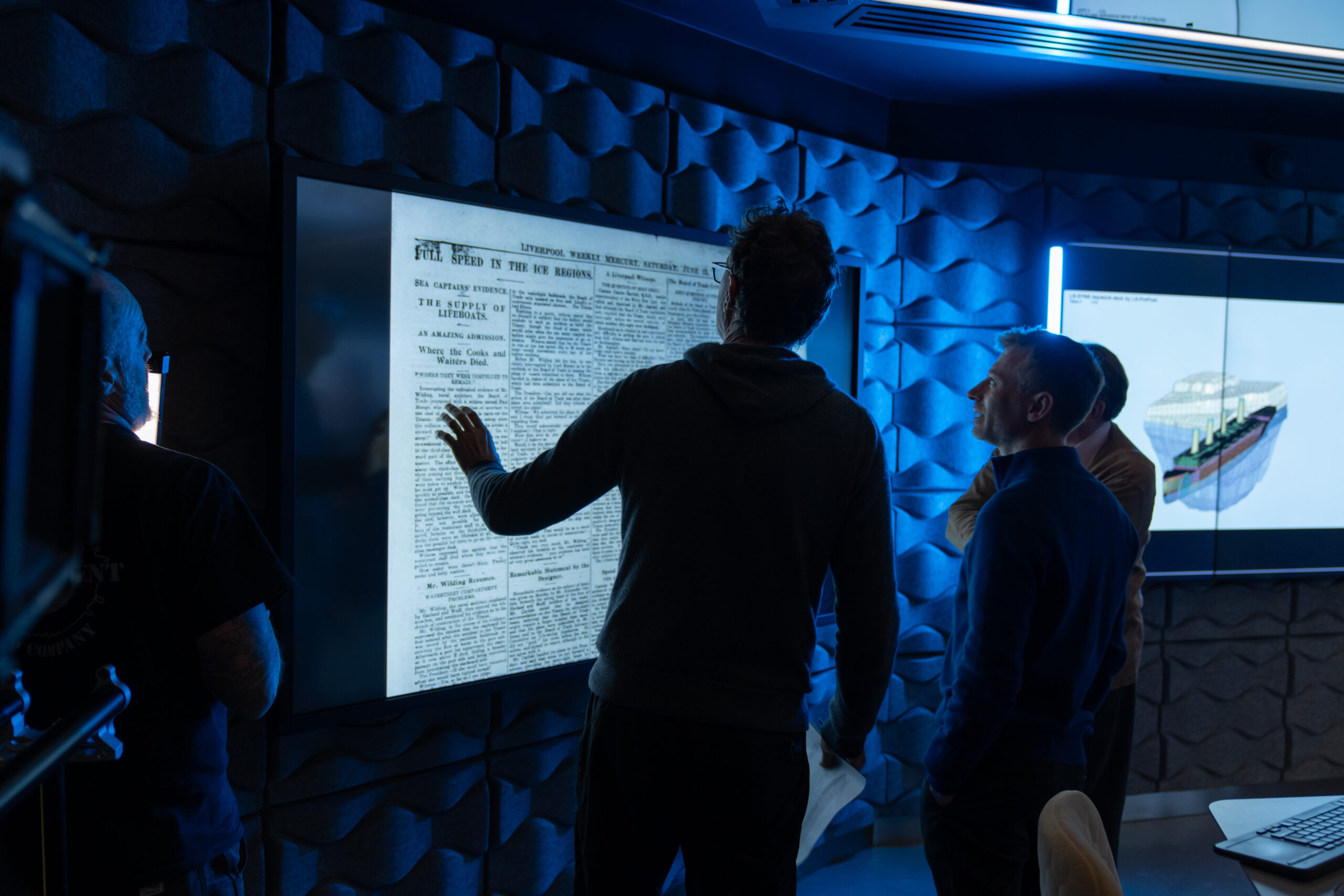
Each emerging theory was rigorously tested. New insights were presented to multiple experts for validation, ensuring a well-rounded and scientifically backed perspective. Where deeper examination was needed, the Design and Visual Effects team worked closely with specialists, using high-resolution scans to provide detailed visual access to specific sections of the wreck, enabling experts to study Titanic’s remains with unprecedented precision. This collaborative approach allowed historians, including Marshall and Stephenson, to compare digital reconstructions with historical documentation, further refining the accuracy of the final interpretations.
The research also played a fundamental role in the simulation built for the project. In collaboration with Professor JeomKee Paik FREng, a world-leading naval architect, the team consolidated data from a wide range of sources to inform his simulation of Titanic’s structural integrity and sinking process. Once completed, hours were spent reviewing the findings with Professor Paik to ensure the scientific accuracy of the visualised reconstruction and its depiction on screen.
Beyond the forensic elements, the storytelling was enriched with archival text, images and artworks, carefully curated to serve as references for the film’s graphics and overall visual style. Every piece of artwork and CGI was developed alongside the research team, with each element requiring final approval to ensure historical and factual accuracy.
Script accuracy was paramount. Every version underwent a thorough fact-checking process, first by the internal team and then independently verified by the experts. The commitment to factual integrity extended to on-sit oversight during all interviews, shoots and voice-over recordings, ensuring that any real-time adjustments aligned with the verified script.
The approach to research and storytelling ensured that every aspect of the project, from forensic analysis to artistic interpretation was built on a foundation of historical truth, reconstructing the Titanic’s story with greater clarity than ever before.
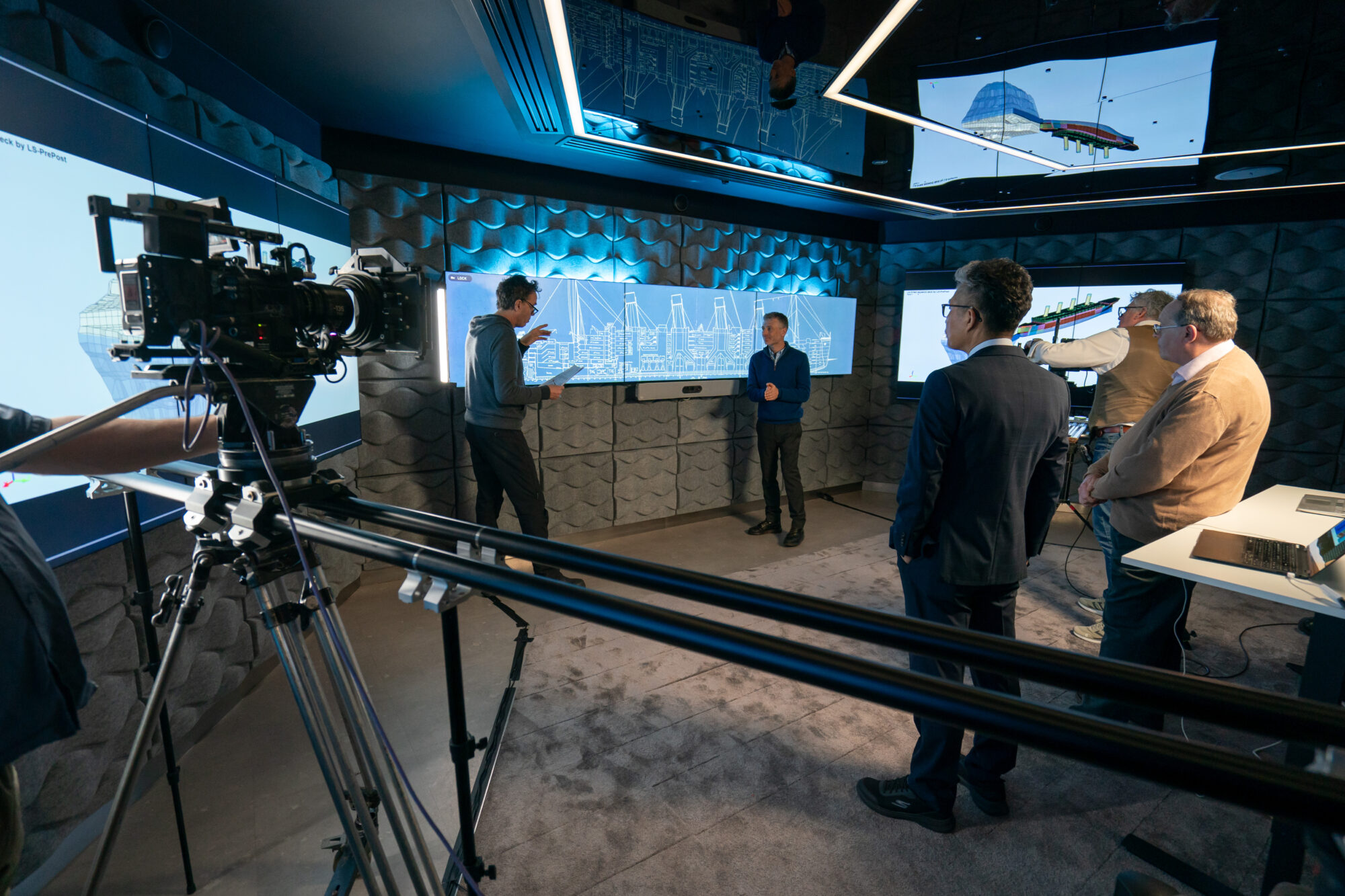
Revealing New Insights
The Titanic wreck is deteriorating rapidly, with deep-sea currents and iron-eating bacteria eroding its structure year by year. As vital details vanish, time is running out to document what remains. This urgency has driven the use of advanced scanning technology, enabling the creation of ultra-high-resolution 3D maps that preserve the site in unprecedented detail.
These scans have not only safeguarded the wreck for future study, but also transformed what we know about Titanic’s final moments, challenging long-held assumptions and validating historical accounts through forensic and historical analysis.
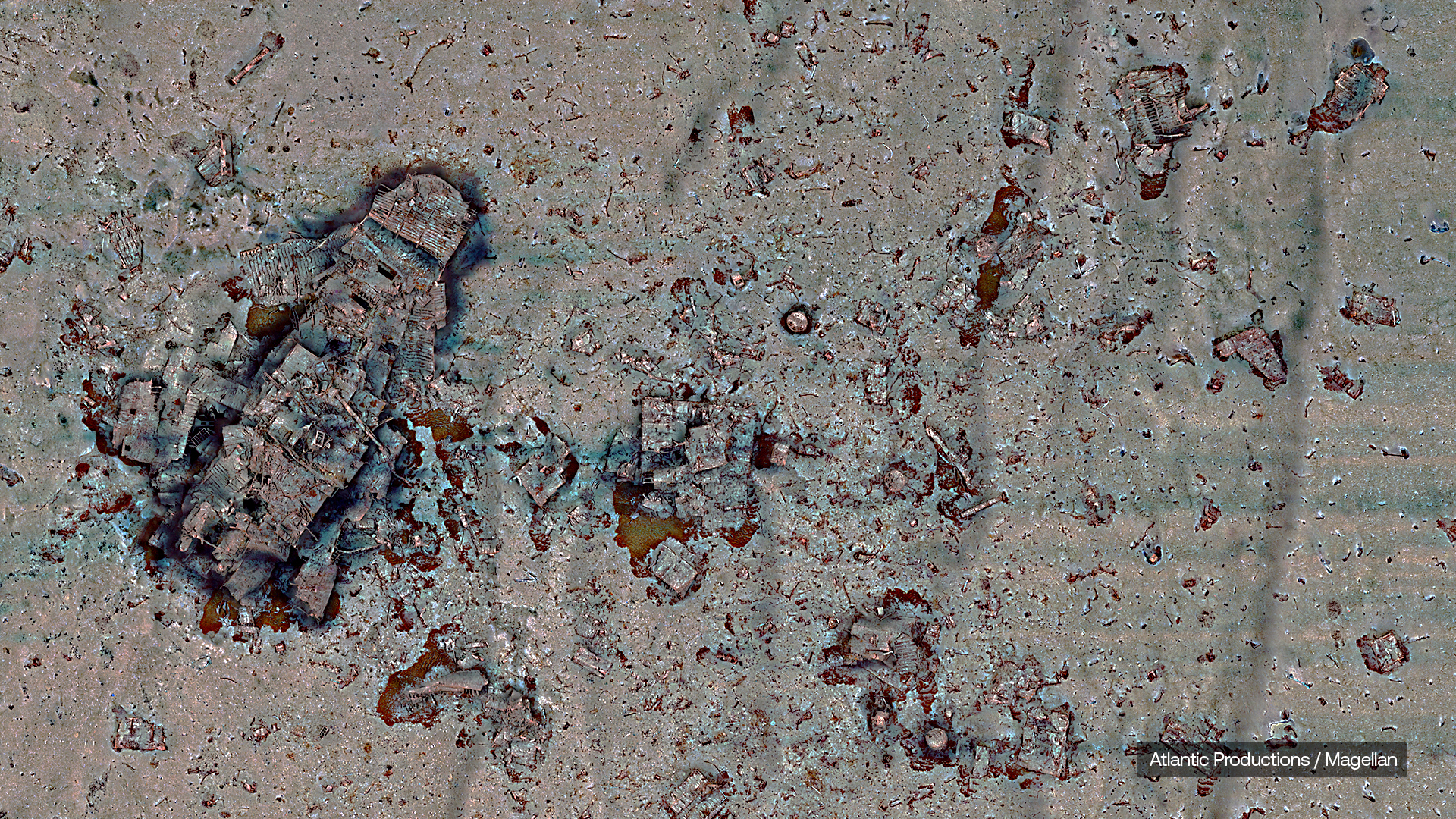
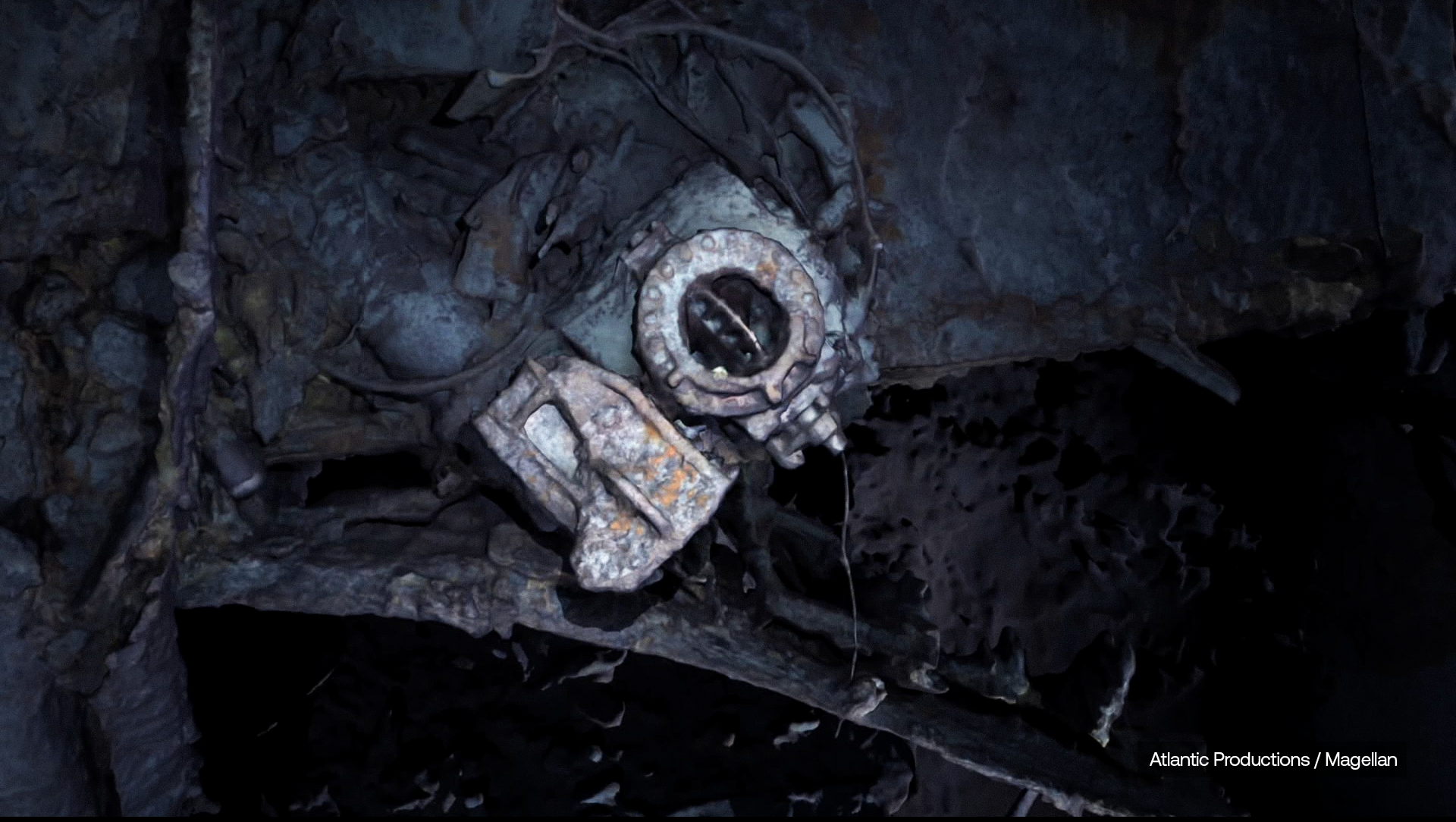
This digital twin of the ship allows for meticulous examination of structural weaknesses and the sequence of events
during the sinking. Groundbreaking discoveries have emerged from this work. The identification of a visible open steam valve confirms eyewitness accounts that Titanic’s engineers heroically remained at their posts, keeping electricity flowing and distress signals active until the very end. A forensic study of hull fragments reveals the ship did not split cleanly in two, but was violently torn apart, an insight that redefines how we understand the disaster’s impact on passenger safety and evacuation routes.
Equally significant is the scan data relating to First Officer Murdoch, which adds further weight to his exoneration. It shows that lifeboat launch preparations were underway just moments before the ship s final submersion and pinpoints the exact area where Murdoch was positioned, offering powerful new clarity on his actions and role in those final hours.
Combining forensic evidence, structural modelling, and immersive visualisation, opened new avenues for understanding
the Titanic, one that not only enriches the historical record but also brings the human story behind this maritime tragedy into sharper focus.
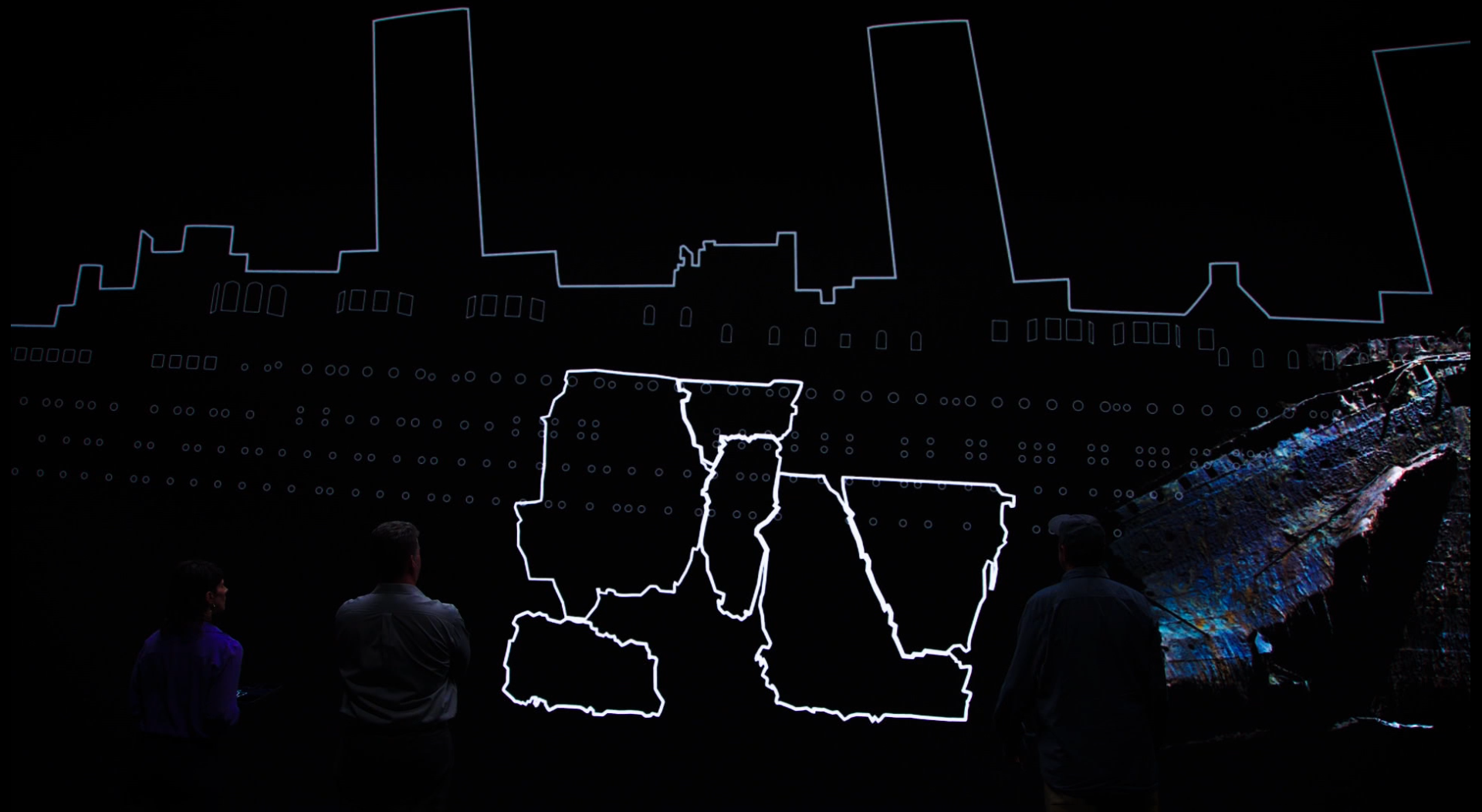

Design and Visualisation in Reconstructing the Titanic
At the heart of this project was a commitment to turning rigorous research into powerful visual storytelling. Atlantic Studio’s Design and Visual Effects teams worked across content animation and analysis to interpret complex forensic, engineering and historical data, transforming it into cinematic sequences that could educate audiences.
From scientifically grounded Simulations to Blueprint animations and Artistic Visualisations, each design layer was meticulously crafted to fill narrative gaps, illuminate new insights and bring clarity to the story.
What follows is a breakdown of how these visual elements came together to reconstruct the Titanic’s final moments.
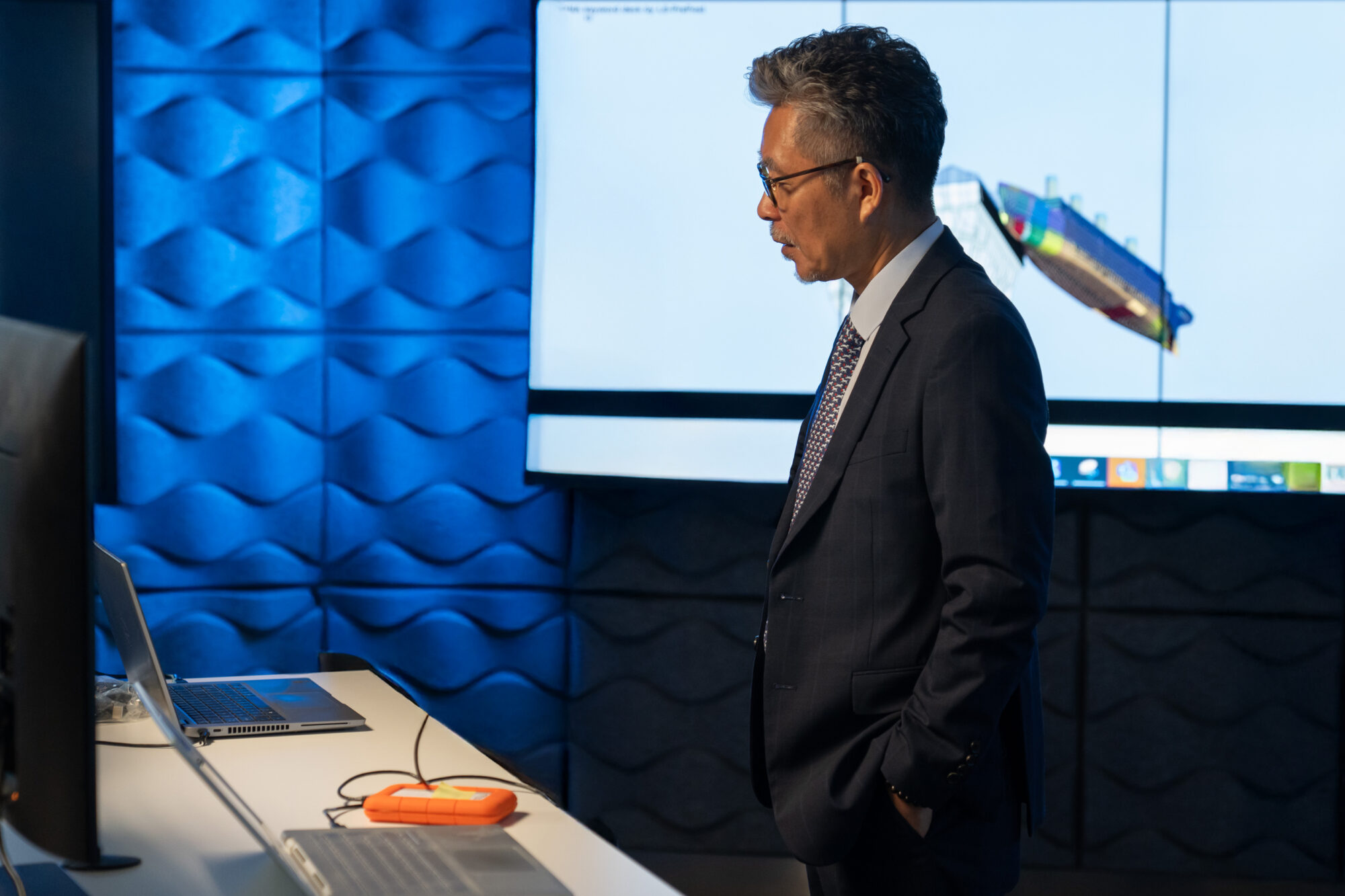
The Simulations
Simulations were used to recreate the Titanic disaster with forensic accuracy, combining science and storytelling to show how the ship broke apart and sank. Built on engineering principles, structural modelling, and historical research, the simulation offered a detailed, data-driven analysis that validated theories, challenged assumptions and revealed new insights into the ship’s final moments.
To ensure precision, Atlantic Studios worked closely with world-renowned Naval Architect Professor Jeom-Kee Paik FREng. Using high-resolution scans, forensic reports, and archival records, the team modelled everything from structural weaknesses to the physical forces at play during the sinking.
Once completed, the simulation findings were reviewed with Professor Paik to ensure scientific accuracy and clarity. This process allowed the data to be faithfully translated into a compelling visual narrative, reshaping our understanding of the Titanic and presenting it on screen with accuracy and realism.
The Blueprints
While the simulation provided a forensic, data-driven reconstruction of the Titanic’s sinking, the blueprint animations translated those findings into clear, dramatic visual storytelling. These animations served as a crucial bridge between scientific analysis and audience understanding, breaking down the complexities of the disaster into concise, engaging sequences that illustrated the ship’s final moments with both precision and impact.
Built directly from the simulation’s findings, the blueprint animations depicted key moments in the Titanic’s demise. They revealed how the ship swerved in an attempt to avoid the iceberg but instead scraped along its side, puncturing the hull in multiple places and allowing water to flood the compartments. They visualise the cascading failure in the boiler rooms as water surged through, sealing the ship’s fate. As the immense pressure weakened Titanic’s frame, the animations demonstrated how it ultimately broke apart, with the bow and stern taking separate, violent paths to the ocean floor before settling in their now-iconic positions.
By transforming raw simulation data into fluid, cinematic sequences, these animations didn’t just convey what happened, they bring the disaster to life. They provide context, clarity, ensuring that viewers could fully grasp both the mechanics of the sinking and the human tragedy behind it.
Artist Visualisations
This played a crucial role in bridging gaps where historical records and scan data alone could not fully convey the story. Key moments, such as the collision on the starboard side, the firemen at work just before the boiler room flooded and the catastrophic breach as water surged in, served as essential visual references. By combining forensic evidence with artistic interpretation, these visualisations provided a deeper understanding of Titanic’s final hours.
The Role of Visual Effects and Virtual Production
For a story as iconic and detail-driven as the Titanic, visual effects and virtual production were essential to achieving both historical accuracy and storytelling resonance. The scale, complexity and sensitivity of the subject demanded elements that could faithfully reconstruct the past while engaging modern audiences in a powerful, immersive way.
Virtual Production was used, not simply as a technical solution but as a storytelling direction, blending real-time game engines, motion capture, CGI and LED volume stages to bring the wreck and its history to life.
Partnering with Garden Studios, whose leading virtual production facilities supported every stage of the process, the Atlantic Studio’s teams created a environment where cast, crew and experts could interact with a full-scale digital recreation of the Titanic in real time. This approach gave a greater creative control and production efficiency, while preserving the narrative and historical significance of every moment and detail on screen.
Asset Scanning and Build
The raw scans served as the foundation for highly detailed digital reconstructions. Every element of the wreck, down to rivets, fractured portholes, collapsed structures, and debris fields, was captured and rebuilt with precision, a reconstruction rooted in data.
Photogrammetry played a central role in the process, allowing real-world surface textures to be accurately reproduced in the digital environment. These photorealistic textures gave each asset scientific integrity while also ensuring they could be clearly understood on screen. The final result was a suite of digital elements that were both technically accurate to educate and honour the reality of the wreck.
Virtual Production and Digital Reconstruction
Atlantic Studios leveraged the power of virtual production to transform deep-sea data into a fully explorable cinematic environment. Beginning with 715,000 images and 16 terabytes of scan data, the team reconstructed the Titanic’s wreck inside Unreal Engine, creating a full-scale, volumetric model for immersive use on an LED stage.
The volume itself, a curved 8-metre-high by 23-metre-wide LED wall with a resolution of 8096 x 2816 pixels, became the stage for real-time interaction. With a 465 sq metre footprint, it enabled historians, filmmakers and VFX teams to walk through the wreck as if physically present. This environment allowed lighting, camera movement and virtual effects to be adjusted live and captured in-camera.
A multidisciplinary team of around 50, including filming crew, VP operators, VFX artists and historians, worked in unison,
integrating visual effects into the production phase rather than post. The ability to incorporate live feedback, adapt
scenes instantly and visualise the Titanic with such scale and depth marked a significant leap in documentary storytelling to explore the wreck with clarity like never before possible.
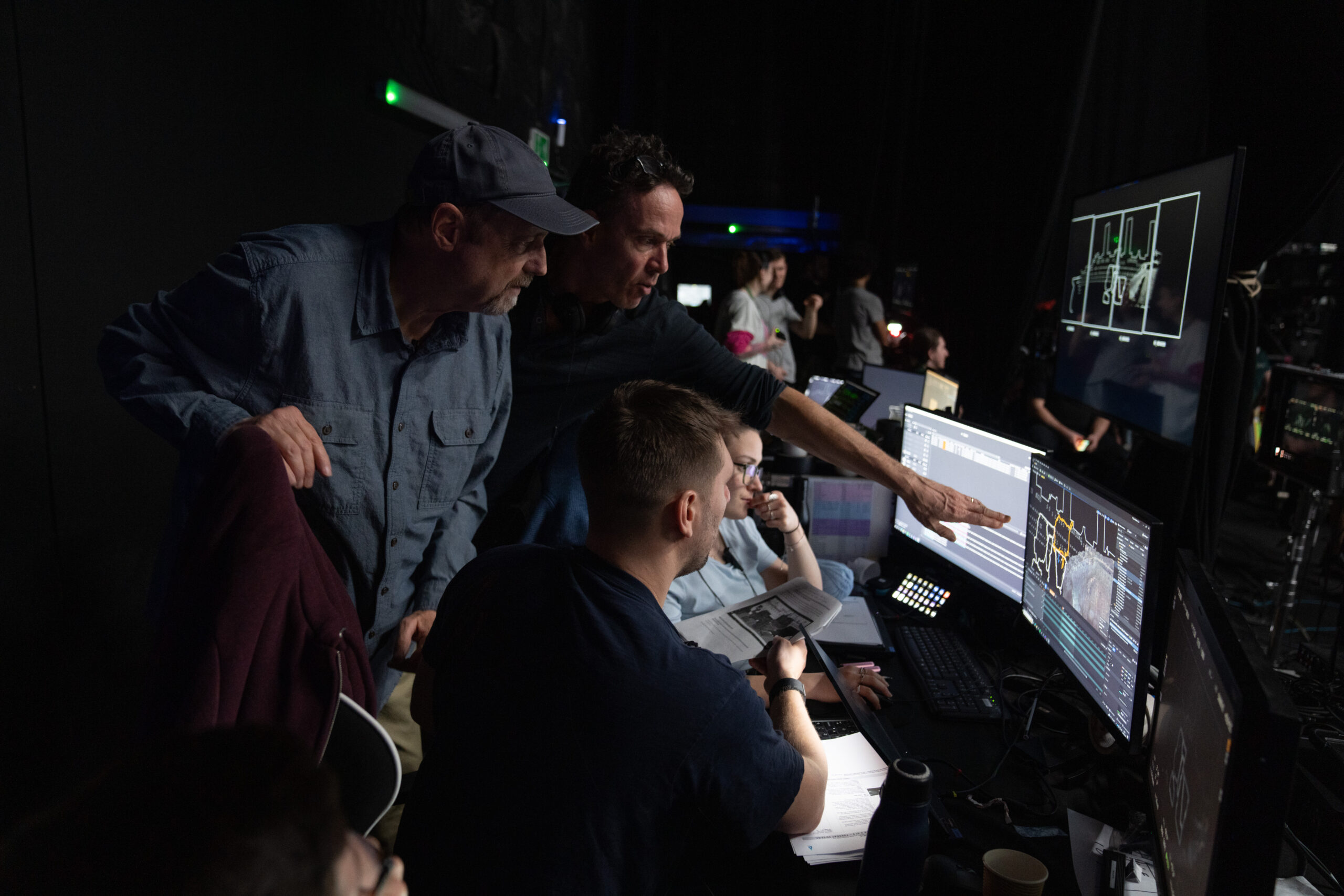
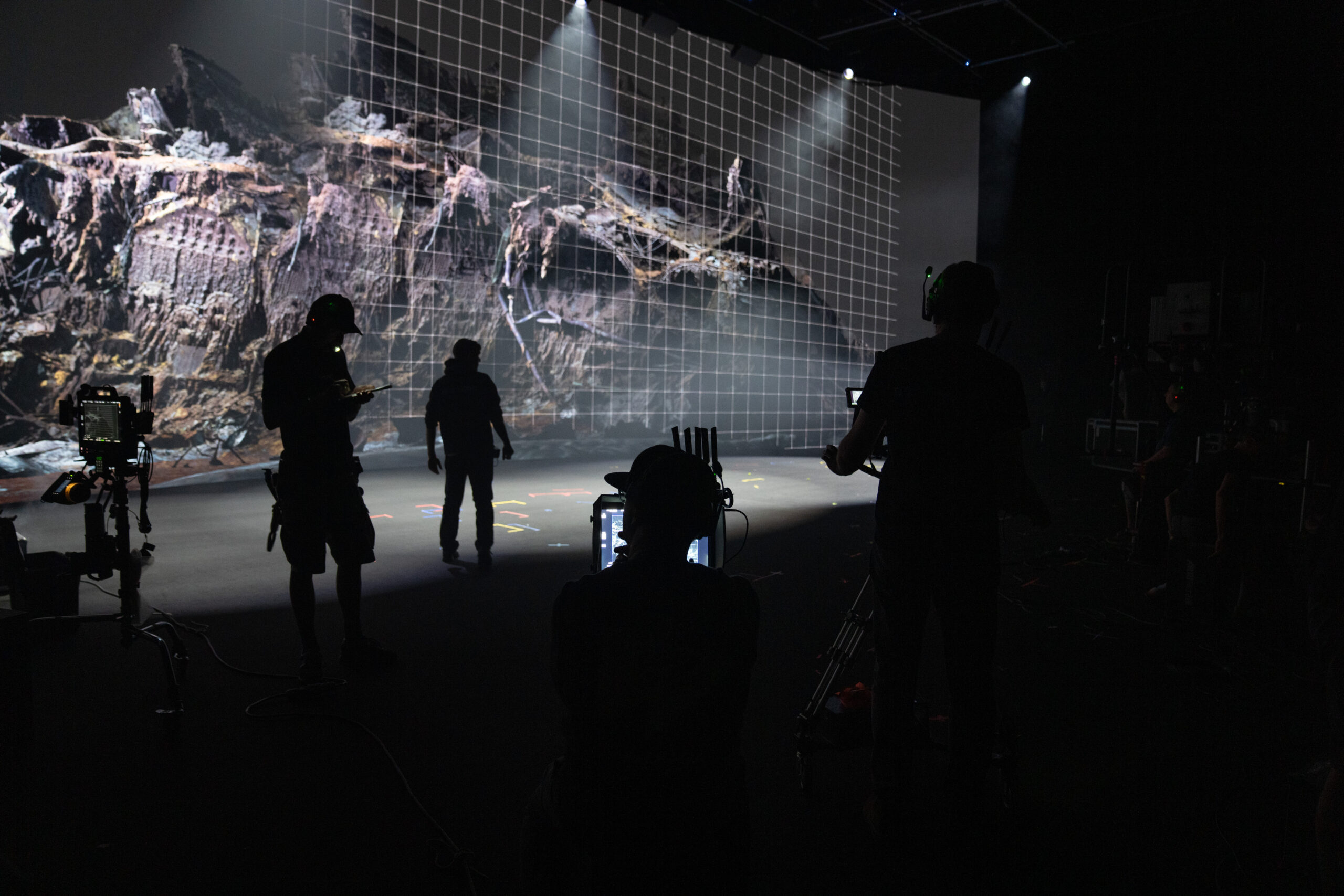

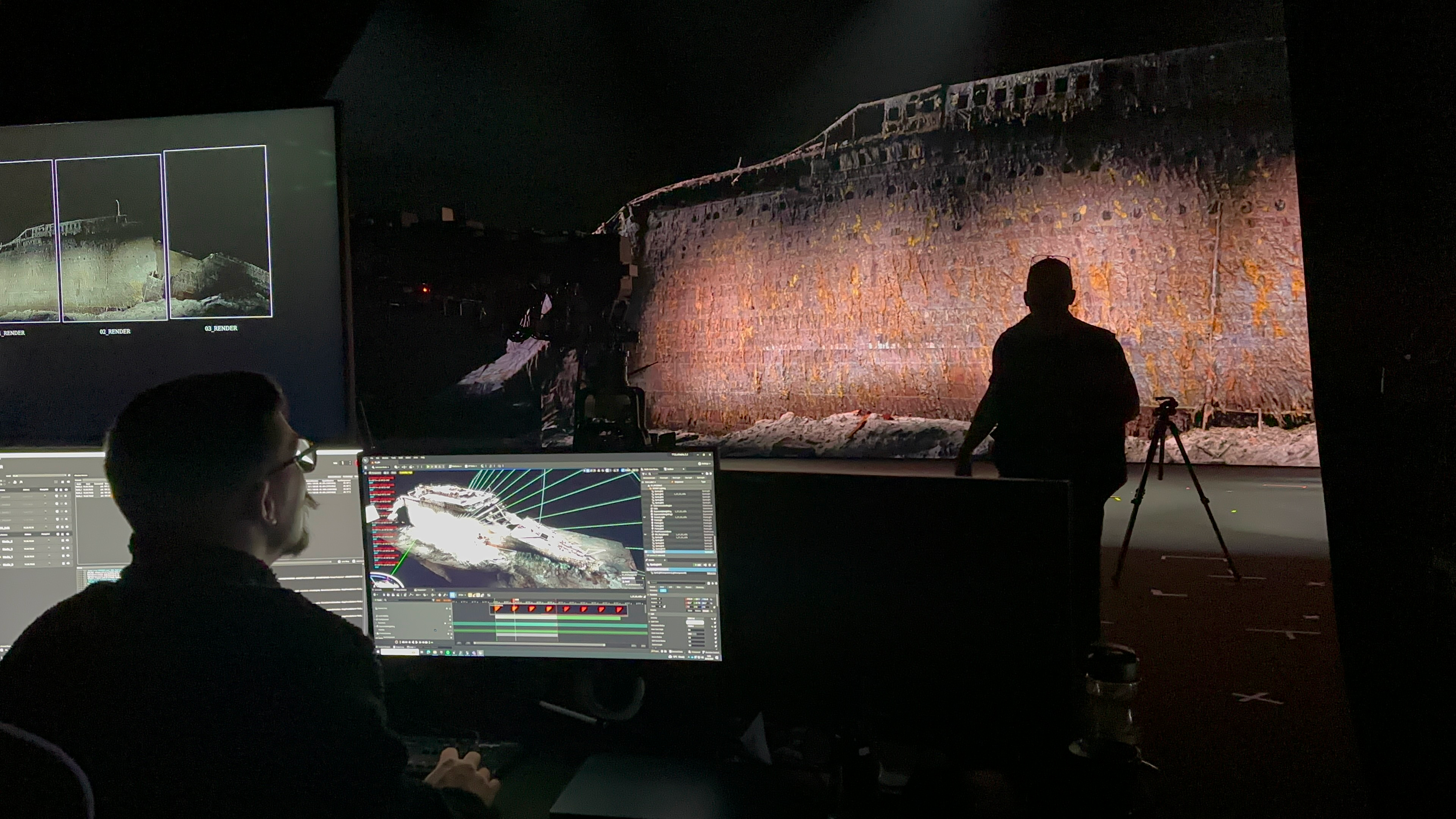
Lighting the Titanic
Lighting the Titanic was designed to create a visual language that honored its historical significance while enhancing its cinematic impact. The real wreck, lying 12,500 feet beneath the surface in complete darkness, provided a starting point for the lighting approach, but on screen, it was essential to reveal its scale and intricate details. The aim was not only to illuminate the wreck but to craft a visual experience that highlighted both its forensic details enhancing cinematic clarity.
From the outset, lighting was integrated into the design and VFX workflow. Within the LED volume, lighting setups were pre-visualised and refined in real time, allowing the team to ensure both scientific accuracy and storytelling.
Cinematography employed slow, graceful camera movements paired with soft, directional lighting inspired by deep-sea
photography and bioluminescence, creating a delicate balance between realism and visual clarity. Key narrative moments, were lit to emphasise the wreck’s significance while maintaining reverence for its history.
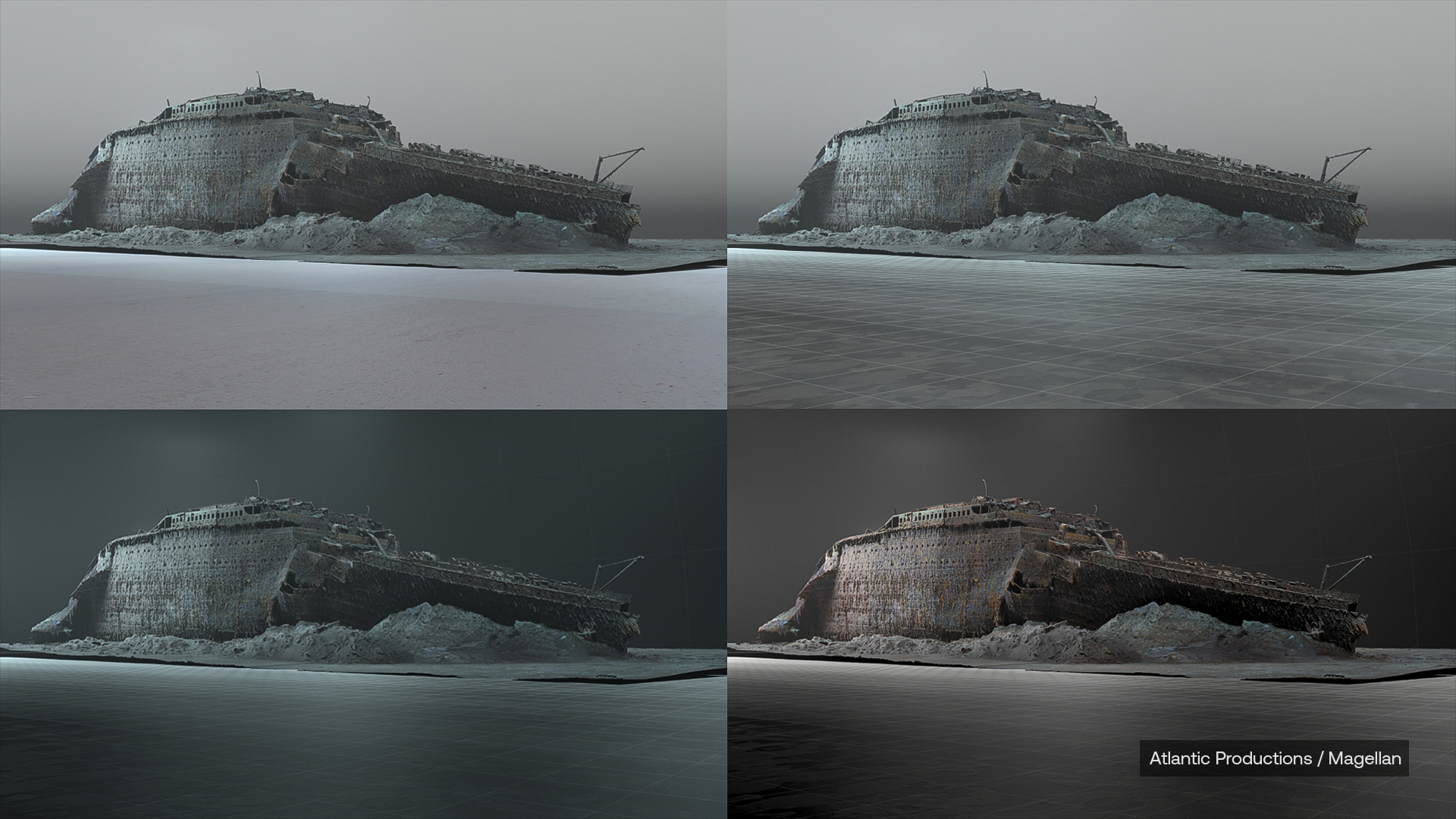
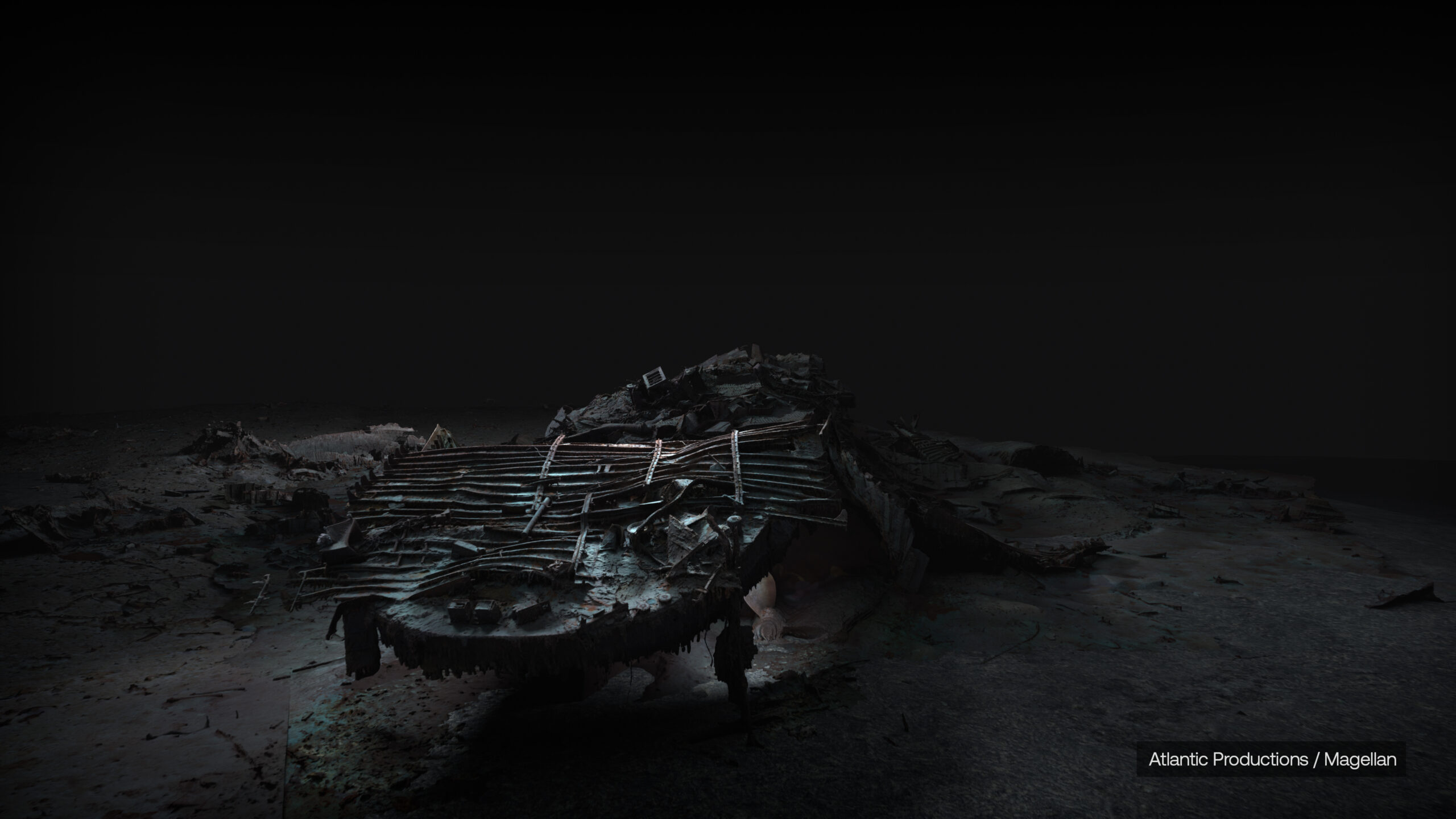
Collaboration between lighting, asset design and virtual production teams ensured consistency in textures, shaders, and lighting behavior within the Unreal Engine environment. Final adjustments to light intensity, colour temperature and shadow placement were made on set, giving the Design and Visual Effects teams precise control over mood and focus.
Ultimately, lighting became a powerful narrative tool, revealing the Titanic with clarity, atmosphere and cinematic depth, guiding audiences to not just into a view, but into presence.

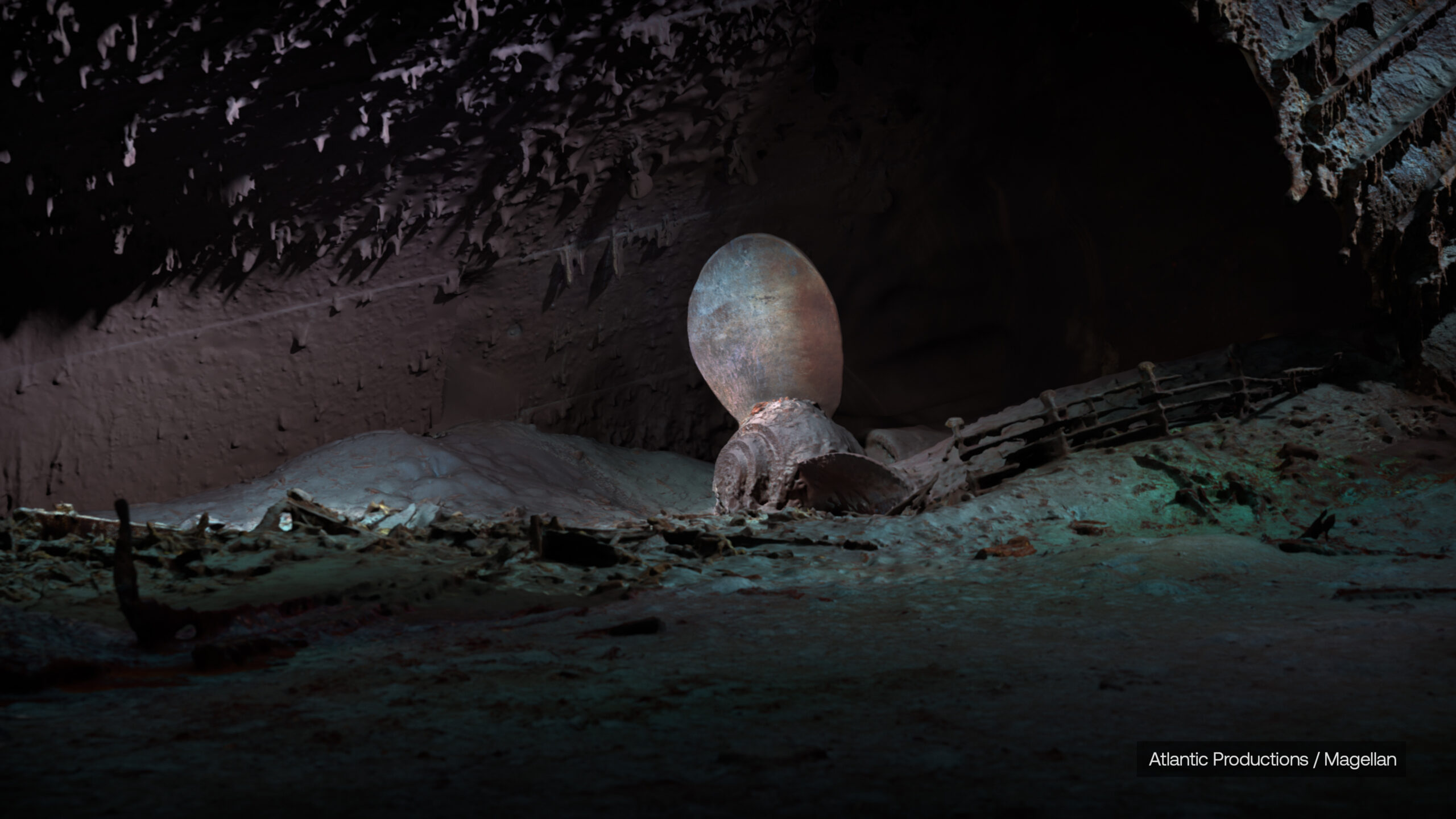
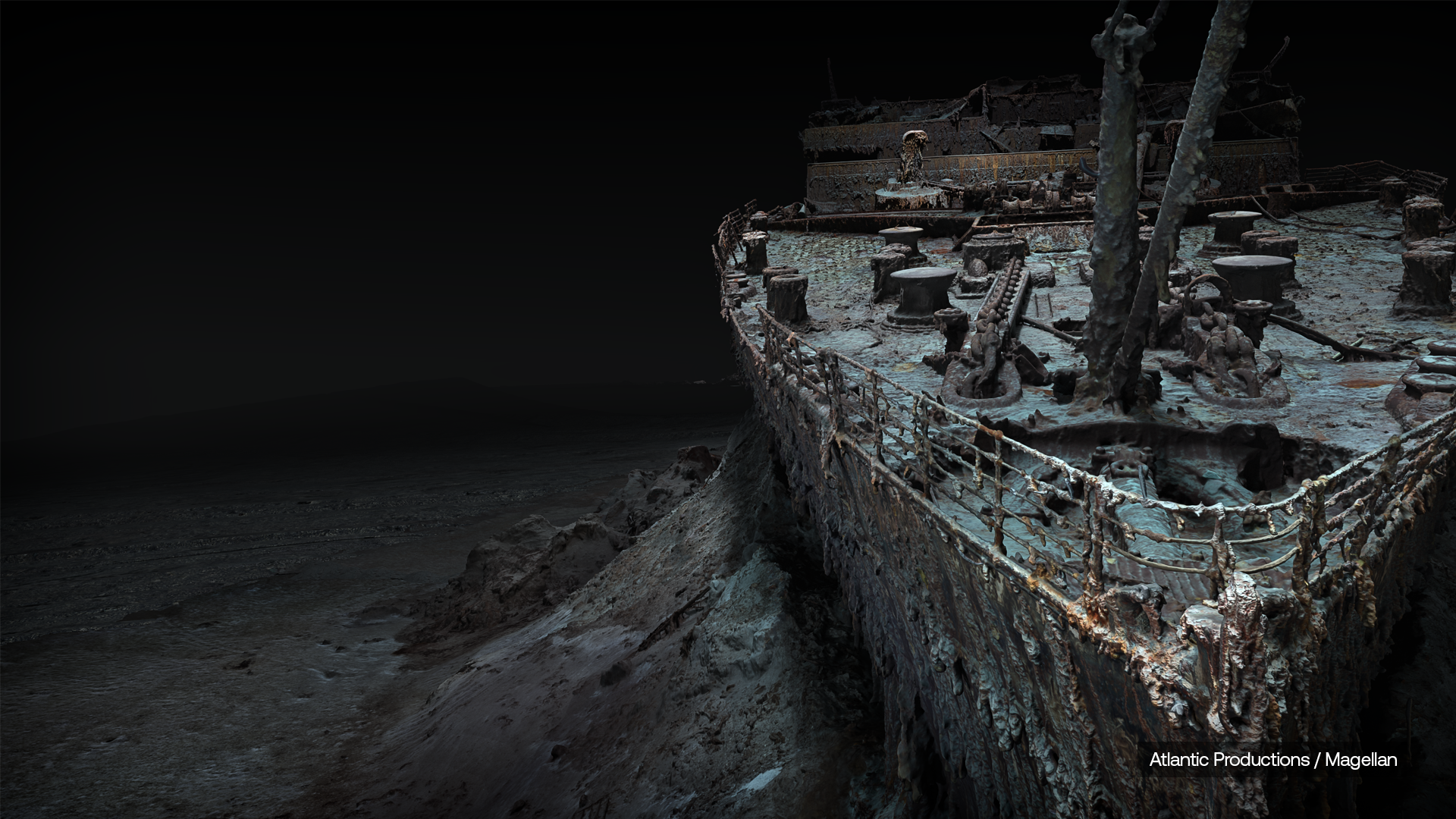
The Future of Exploration and Storytelling
At Atlantic Studios, we ve always been captivated by the enduring story of the Titanic, a tale that continues to evolve and inspire us over a century later. Our latest feature documentary project is an immersive journey that brings the Titanic to life in ways previously unimaginable. By combining the latest deep-sea scanning technology with state-of-the-art visual effects, we’ve created an unparalleled digital archive of this historic ship, capturing every detail with cinematic precision.
At the heart of this endeavor is a fusion of innovative design, forensic precision and groundbreaking storytelling. We’ve crafted a full-scale 3D digital twin of the Titanic, accurate down to the rivet, marking a new era in deep-sea exploration and historical preservation. Every collapsed deck, every twisted fragment of hull, and every artefact has been meticulously reconstructed, ensuring that the Titanic s legacy is no longer confined to the depths of the Atlantic but is now preserved for future generations to explore and learn from.
This project is just the beginning. It paves the way for future explorations, redefining how we uncover lost histories and tell stories with unprecedented accuracy. By merging technology and artistry, we re pushing the boundaries of factual storytelling, making history come alive in ways that are both educational and transformative.
As Anthony Geffen, CEO of Atlantic Studios, said, We’re not just documenting history; we’re preserving it for future generations in ways that were unimaginable a decade ago.”
.
Scans captured by Magellan
.
Feature Documentary , Titanic The Digital Resurrection
on National Geographic Globally
Watch Now
Streaming now on Disney+ and Hulu
.
Immersive Location based and XR Titanic Experience
Expected end of 2025, early 2026
